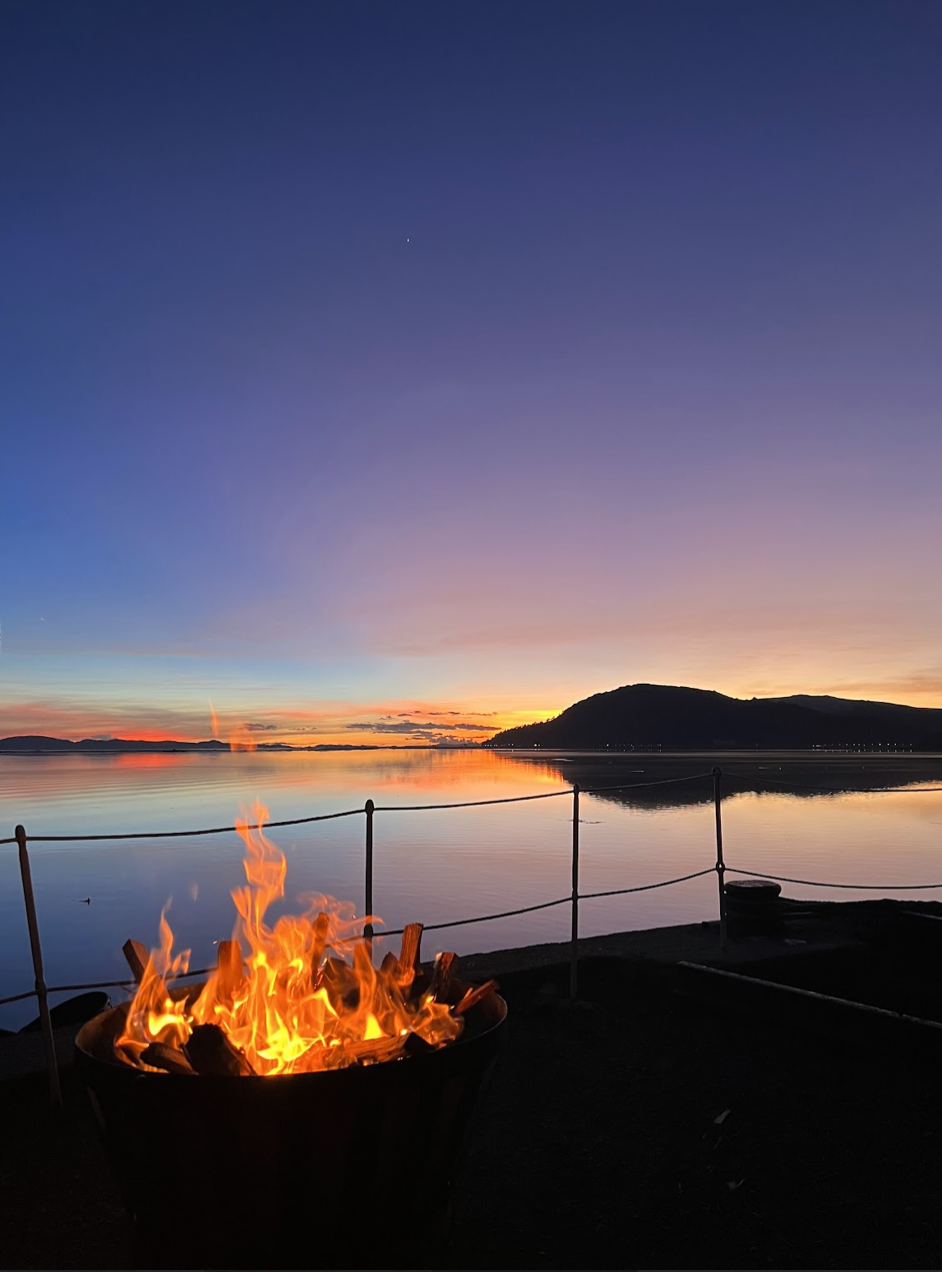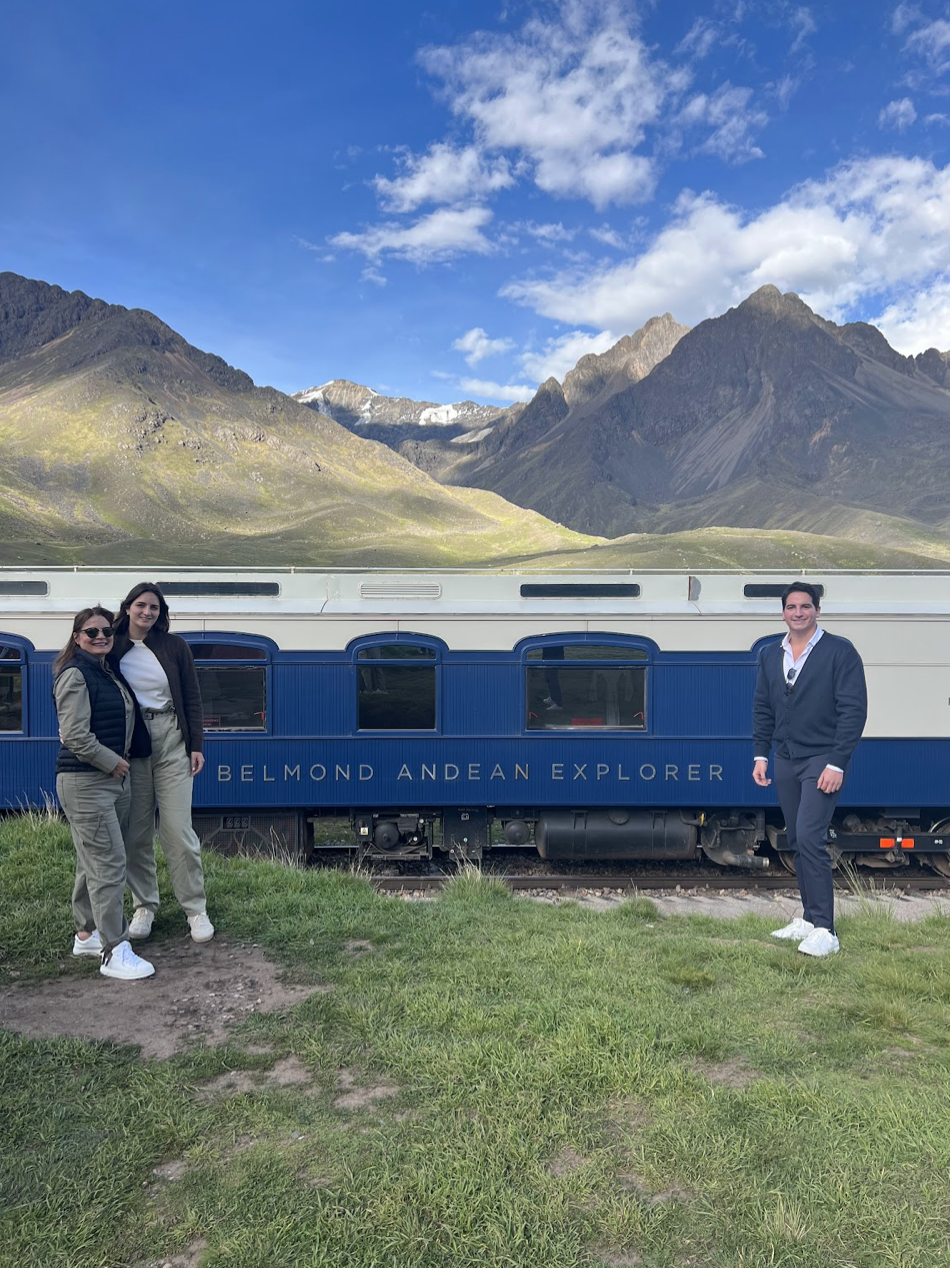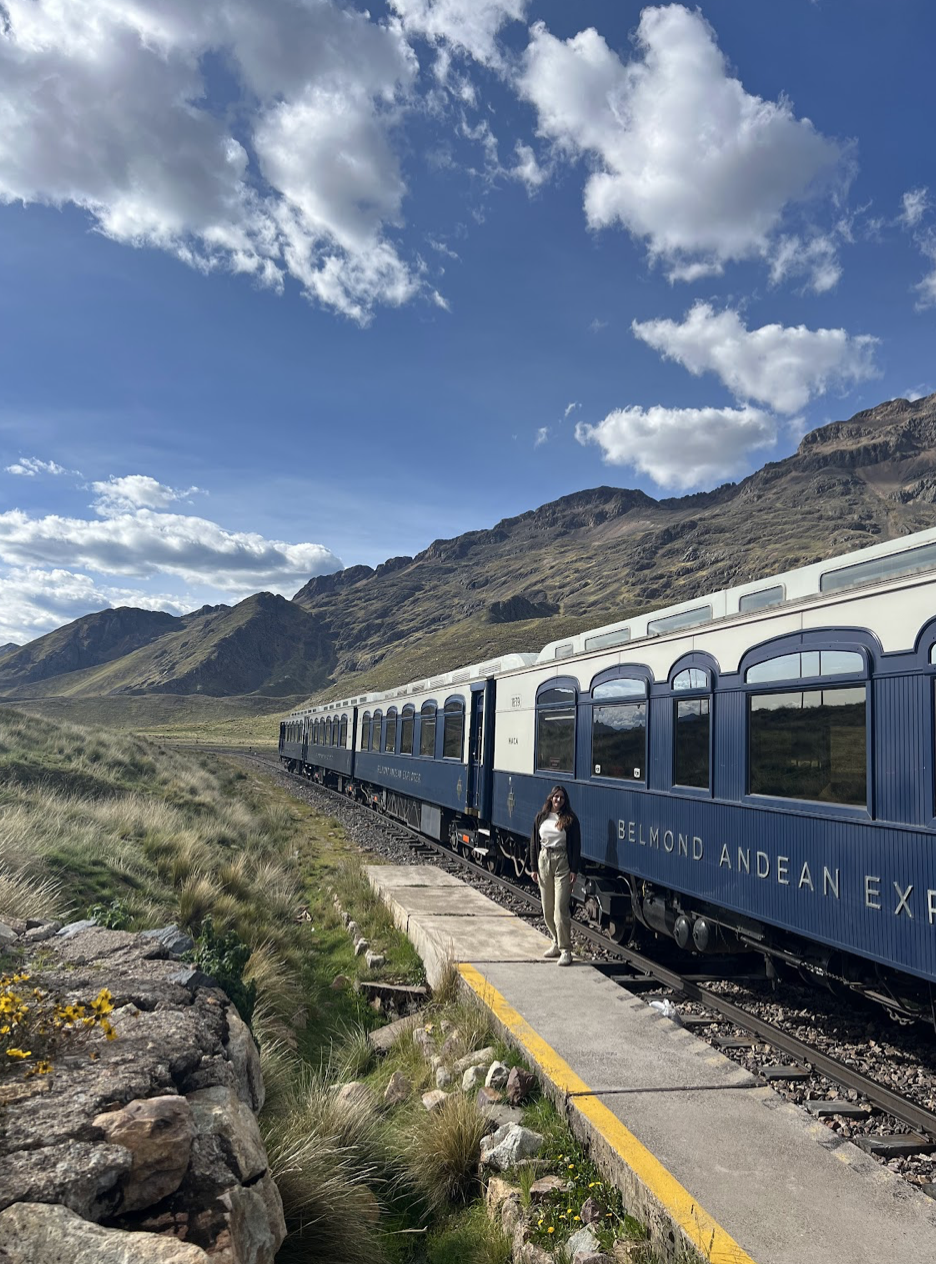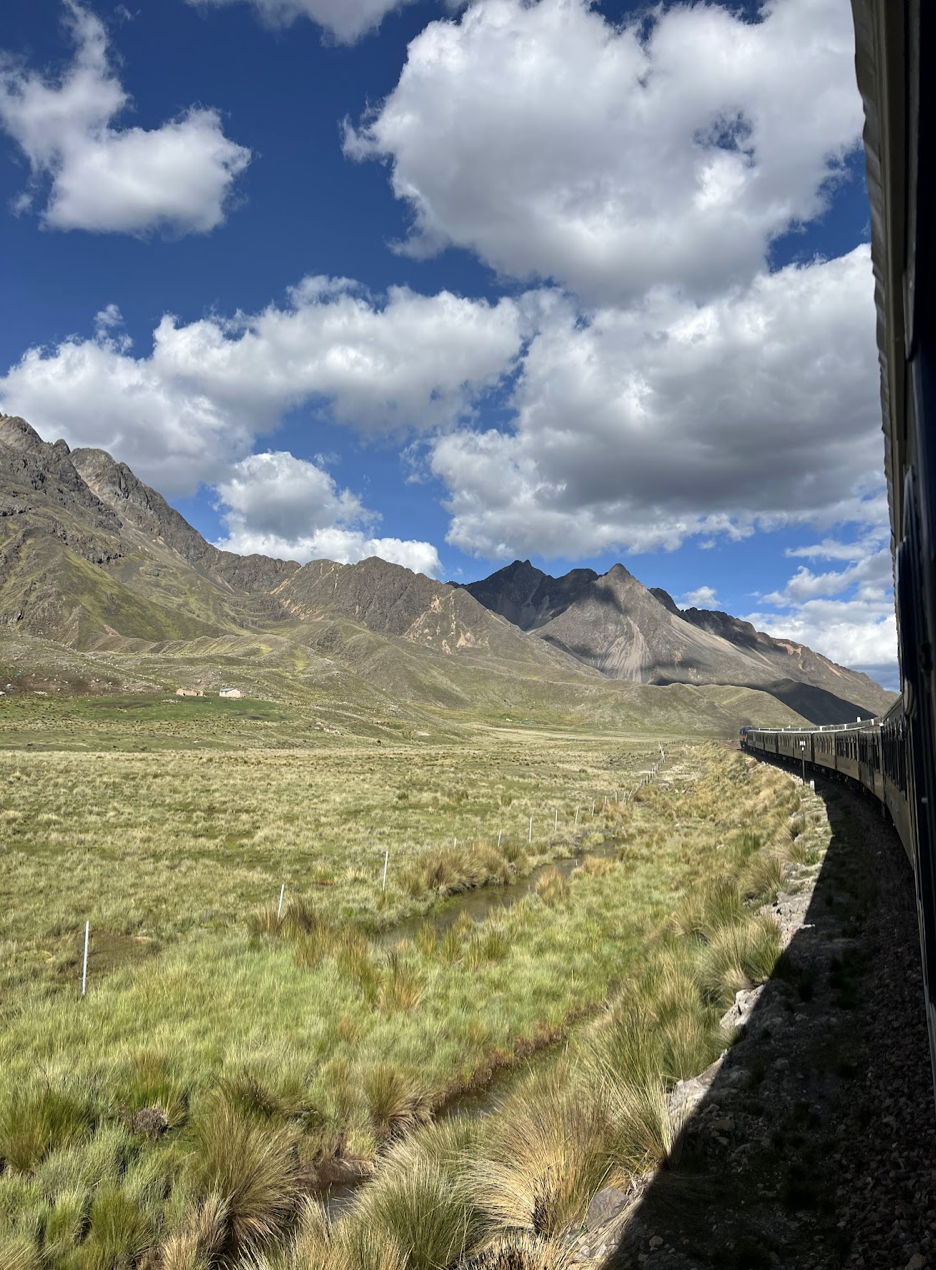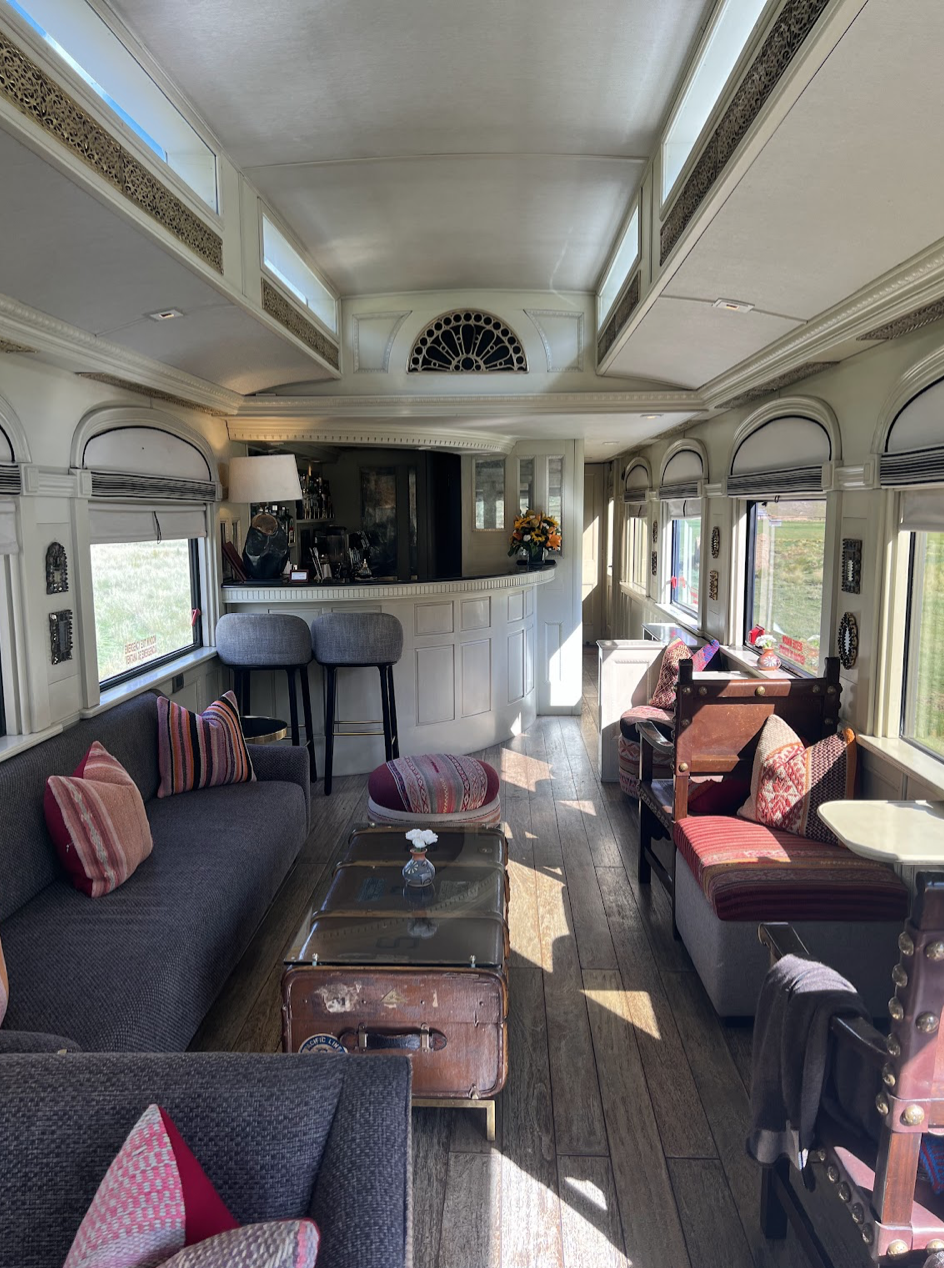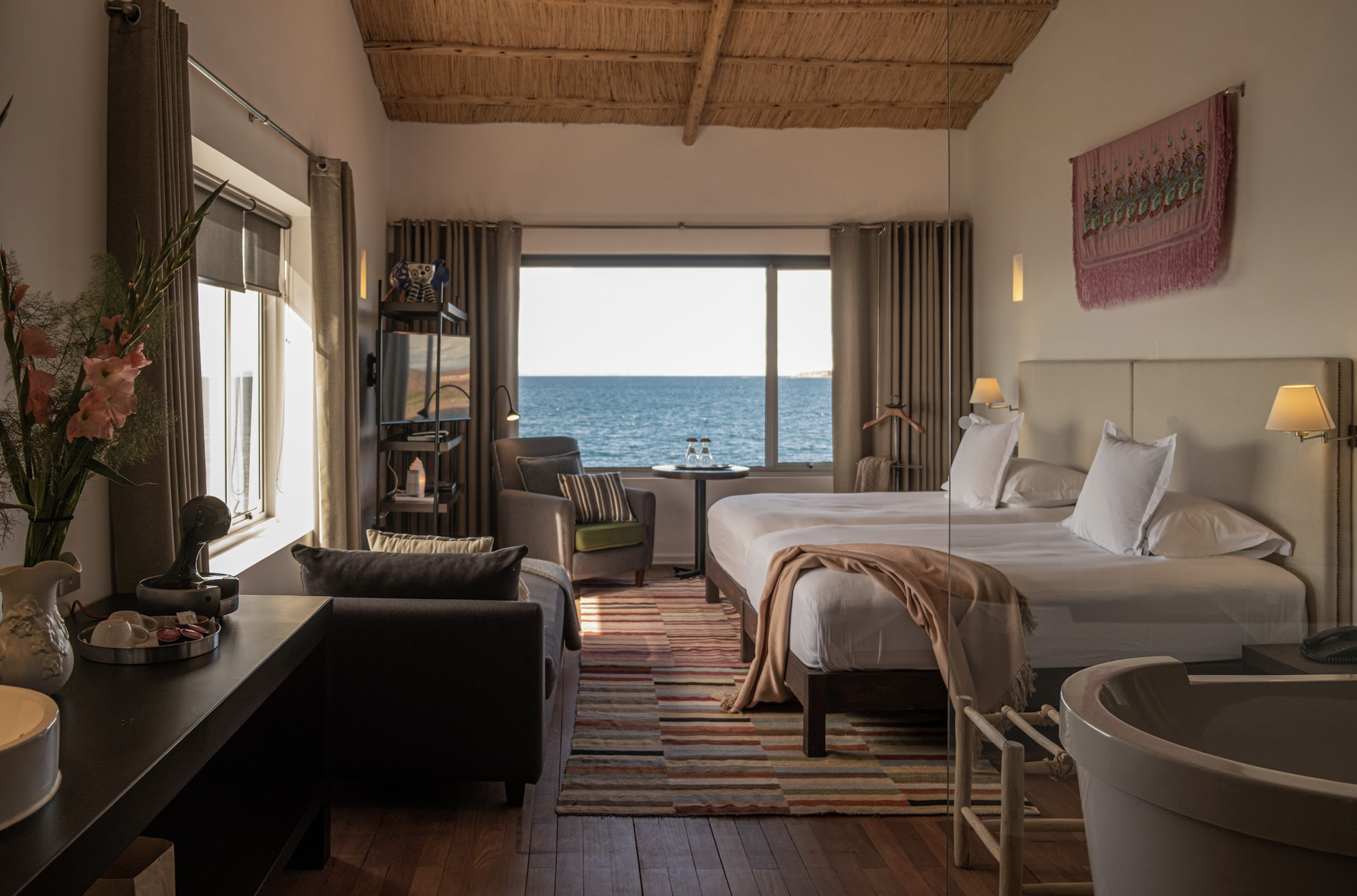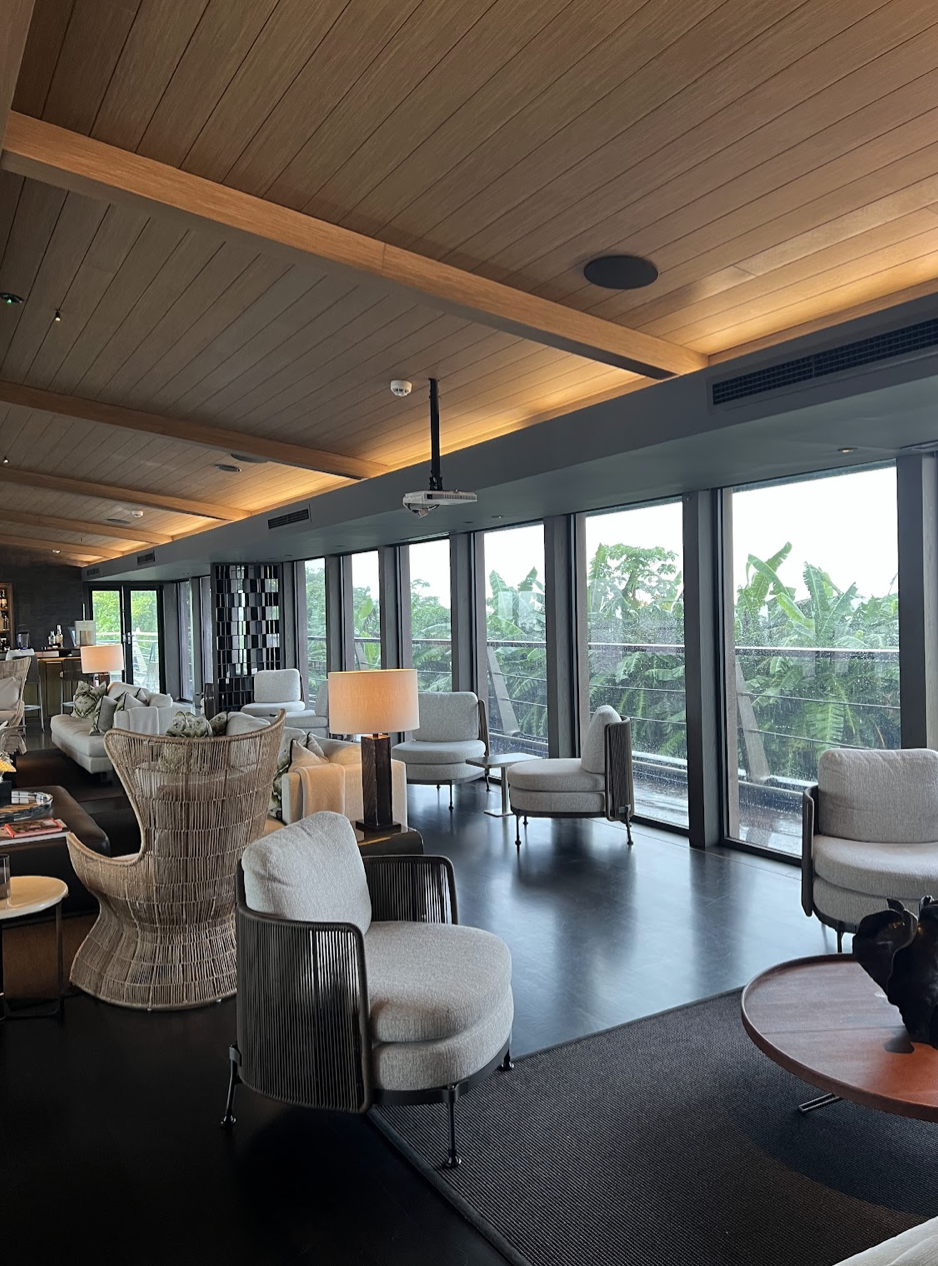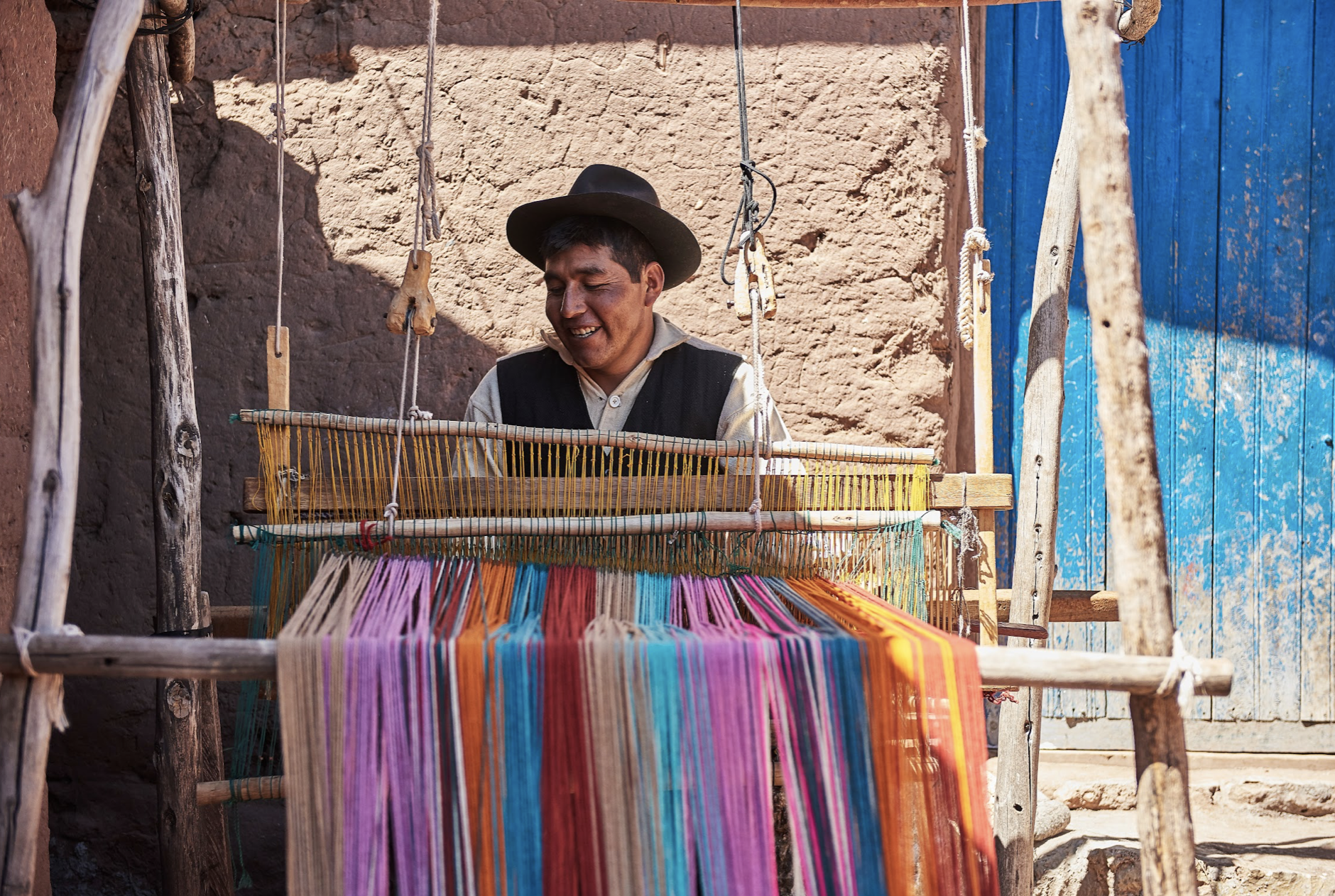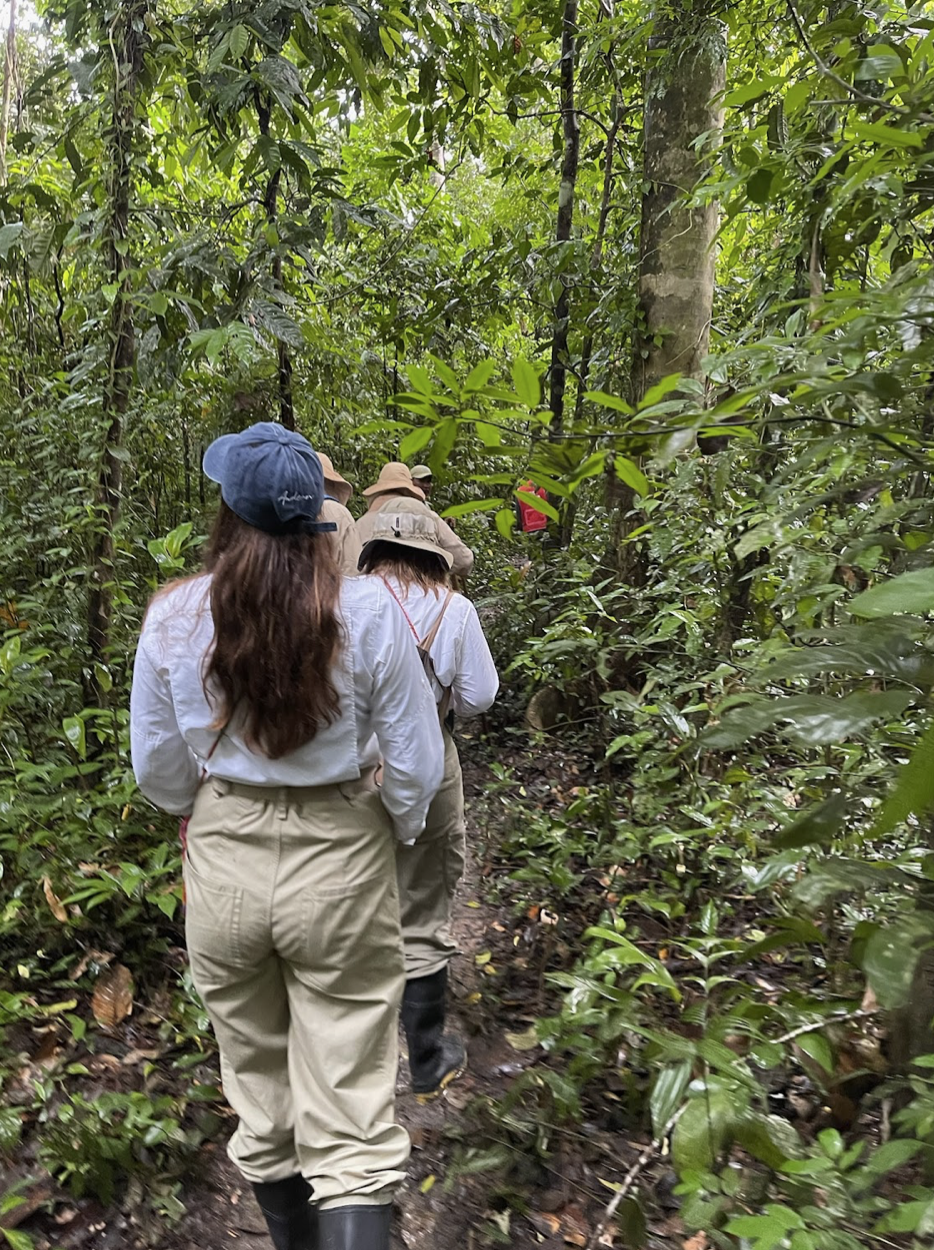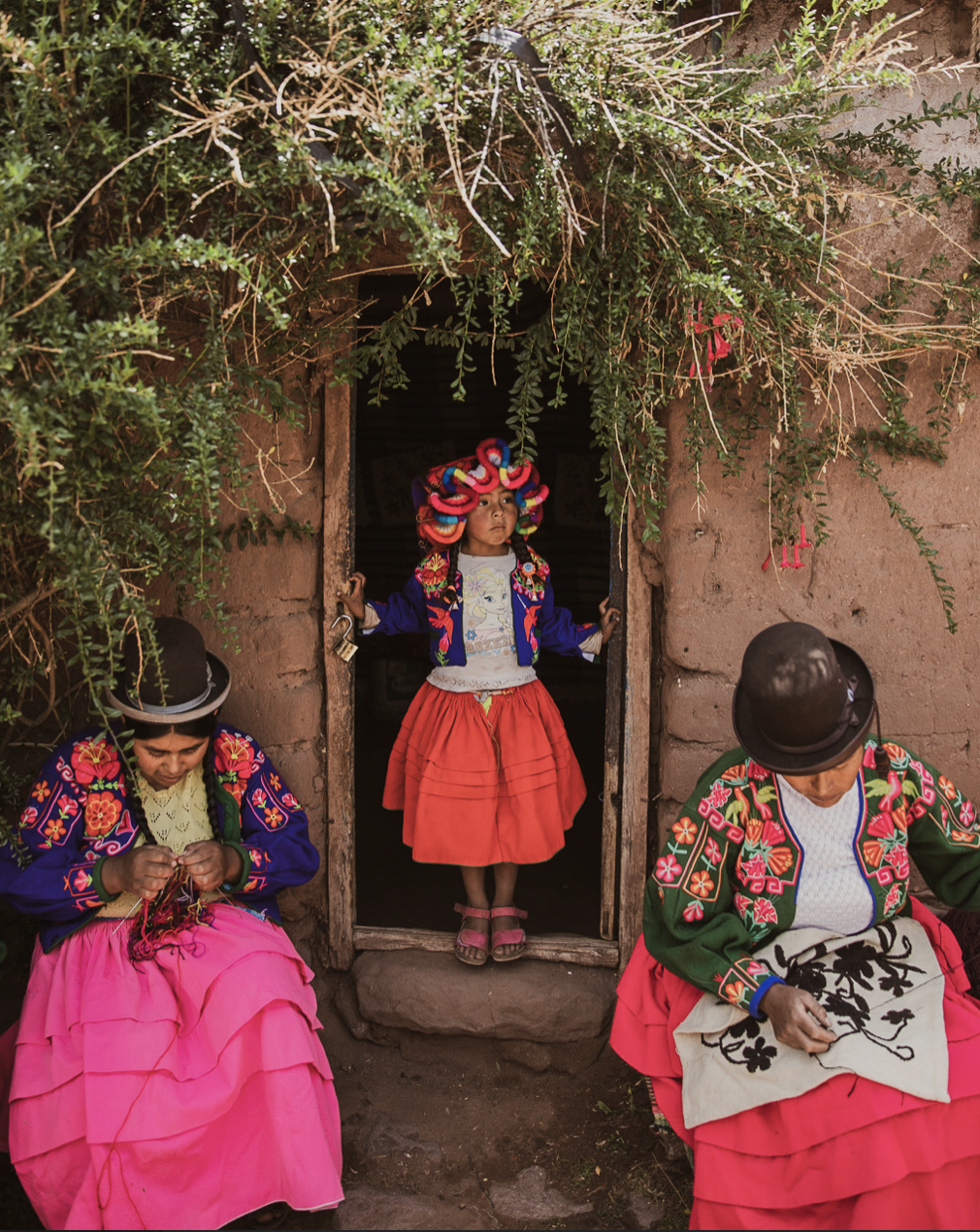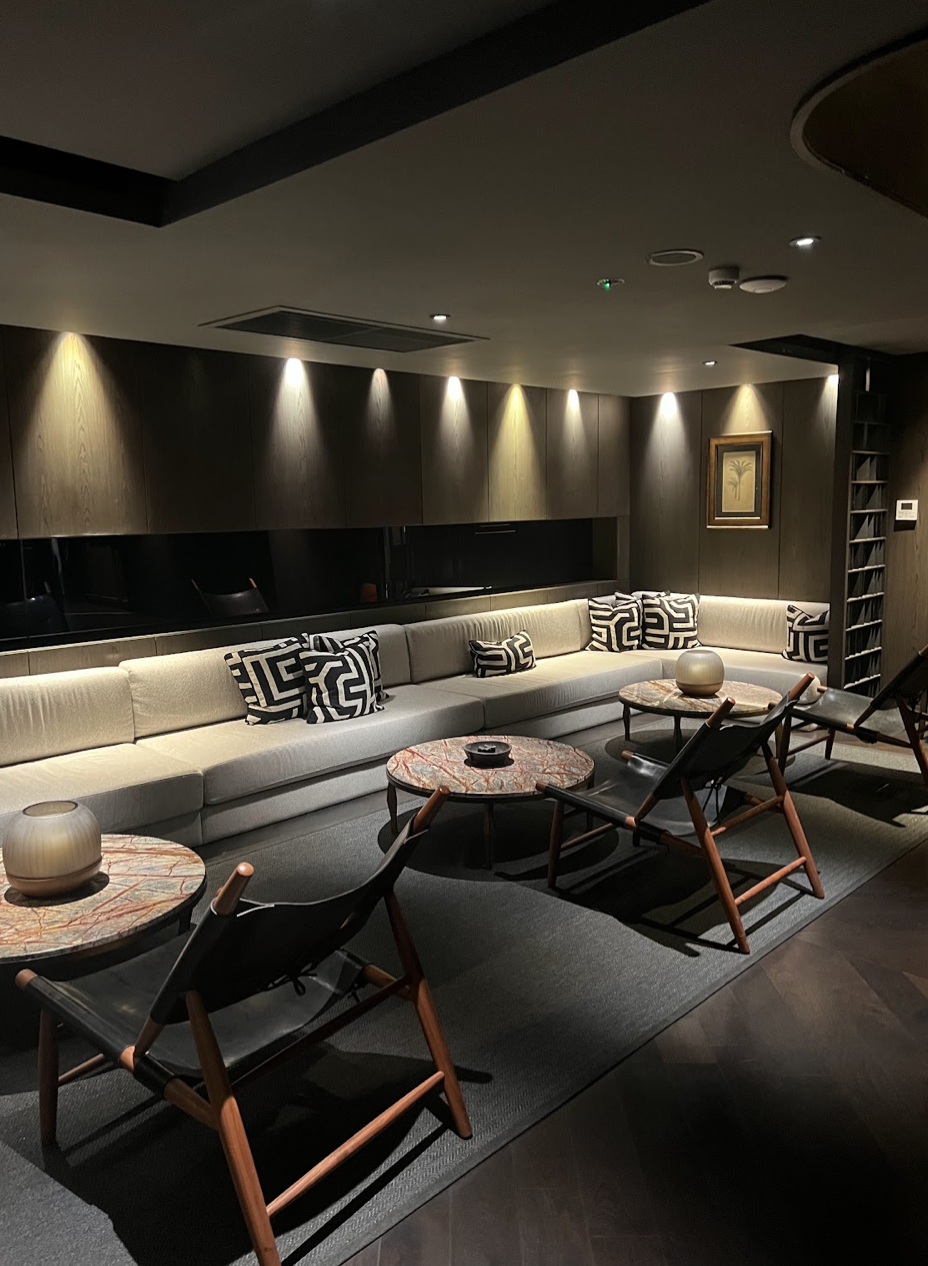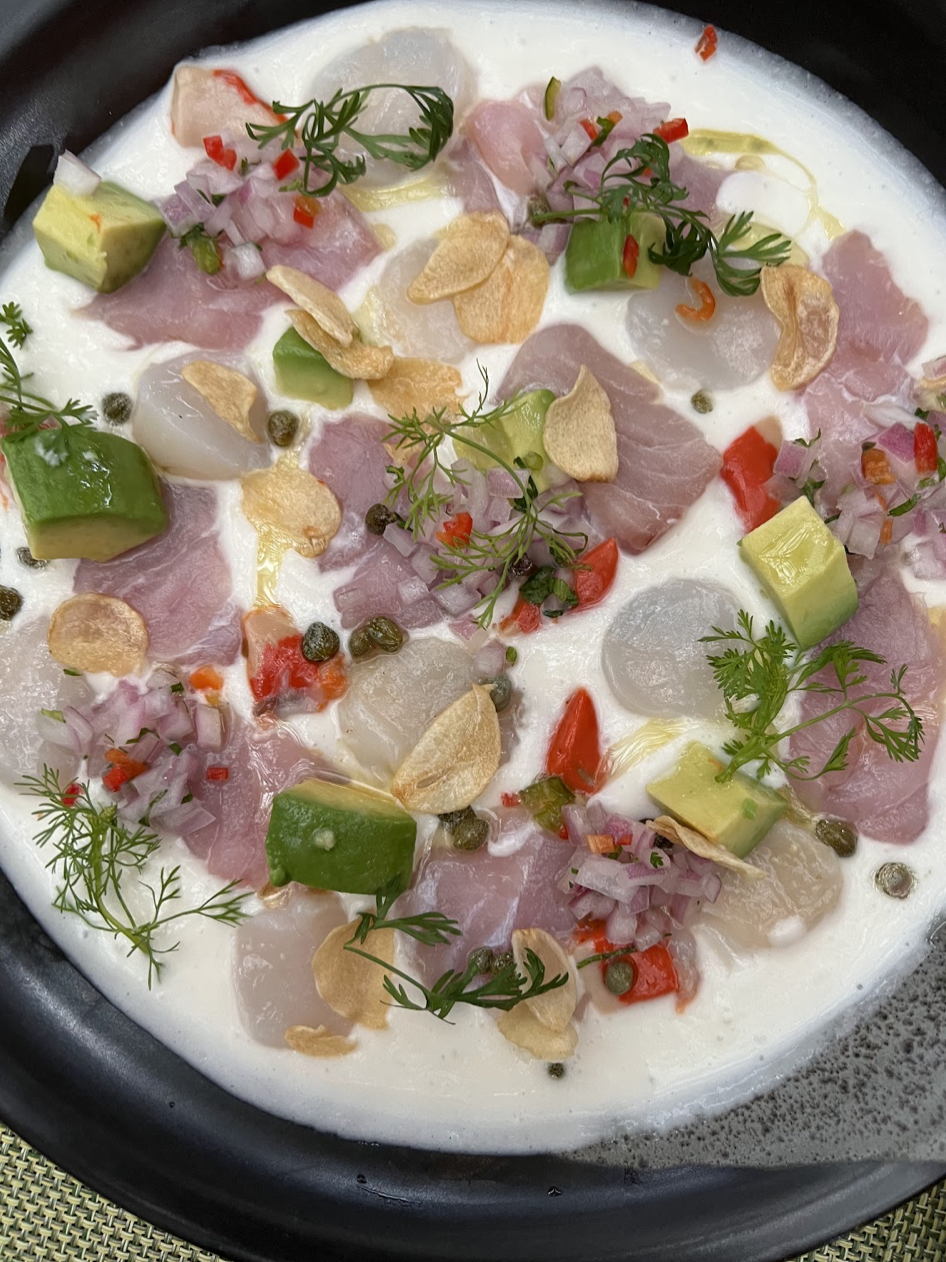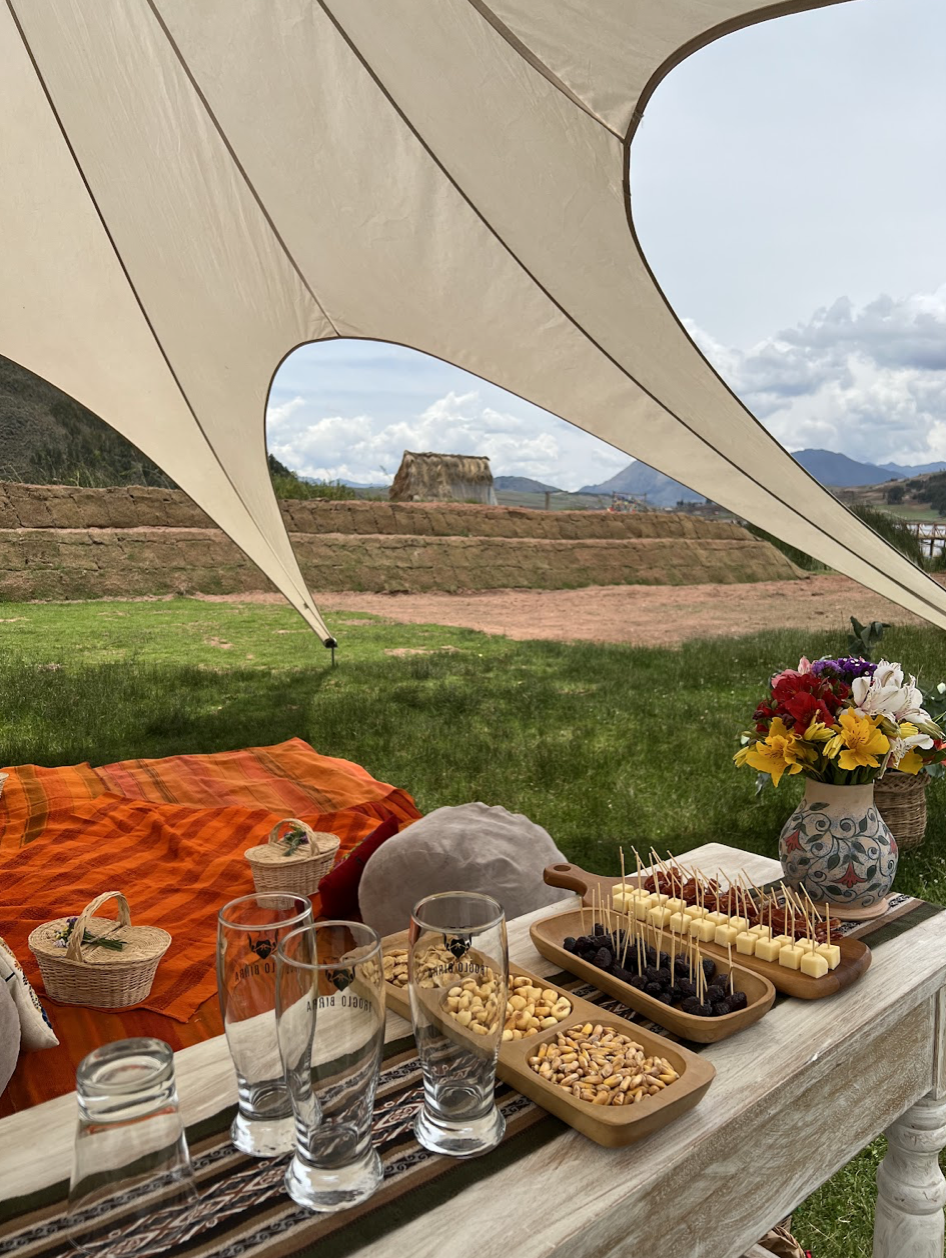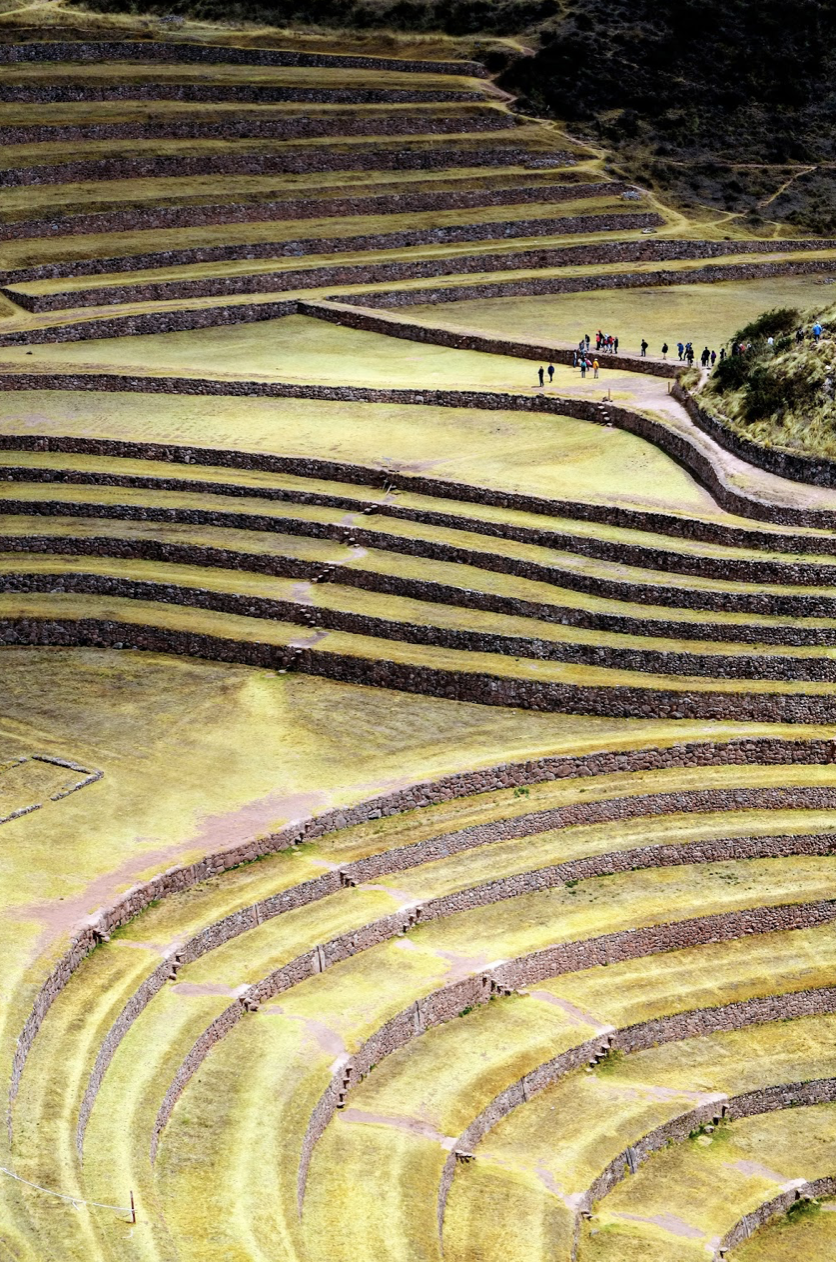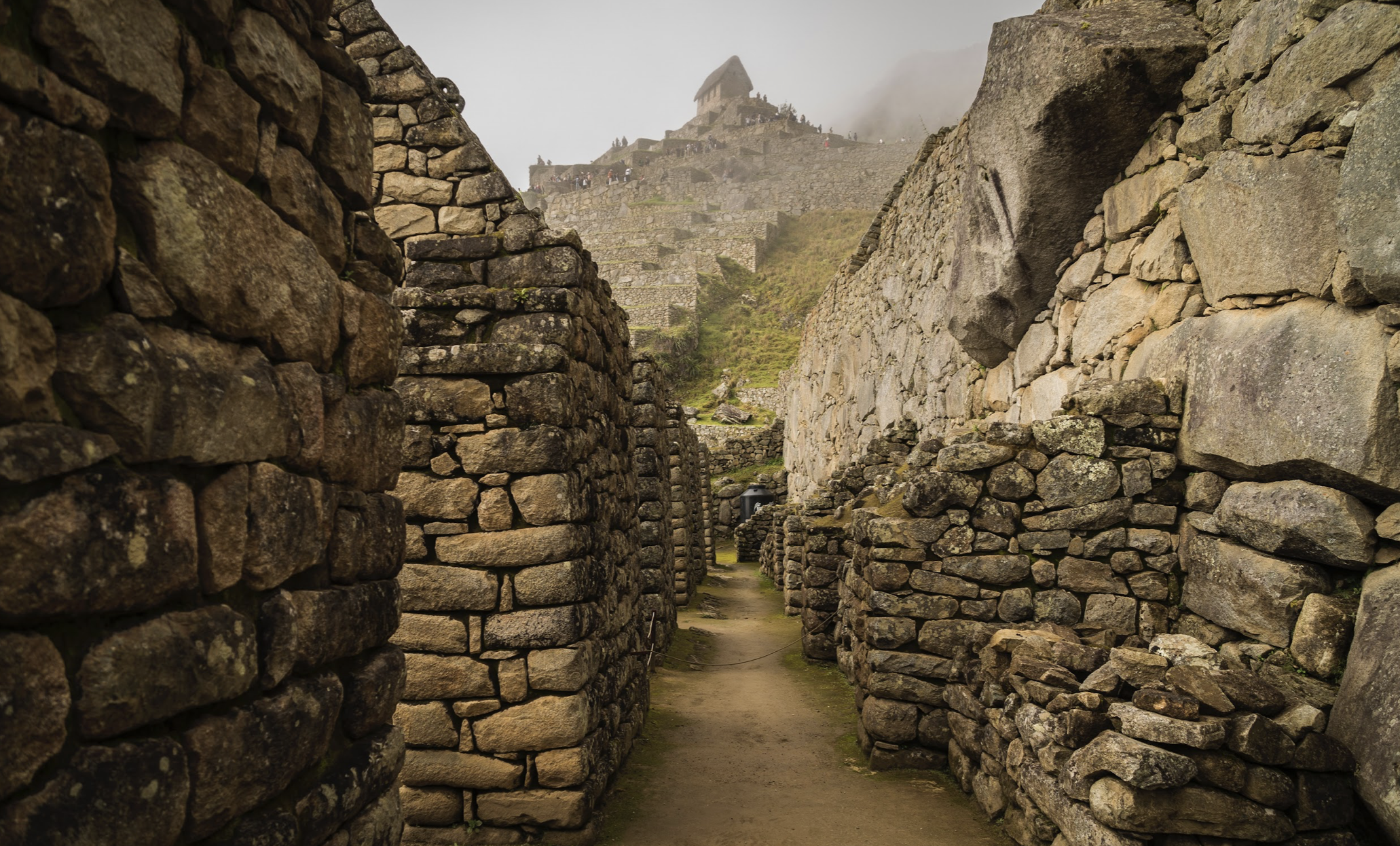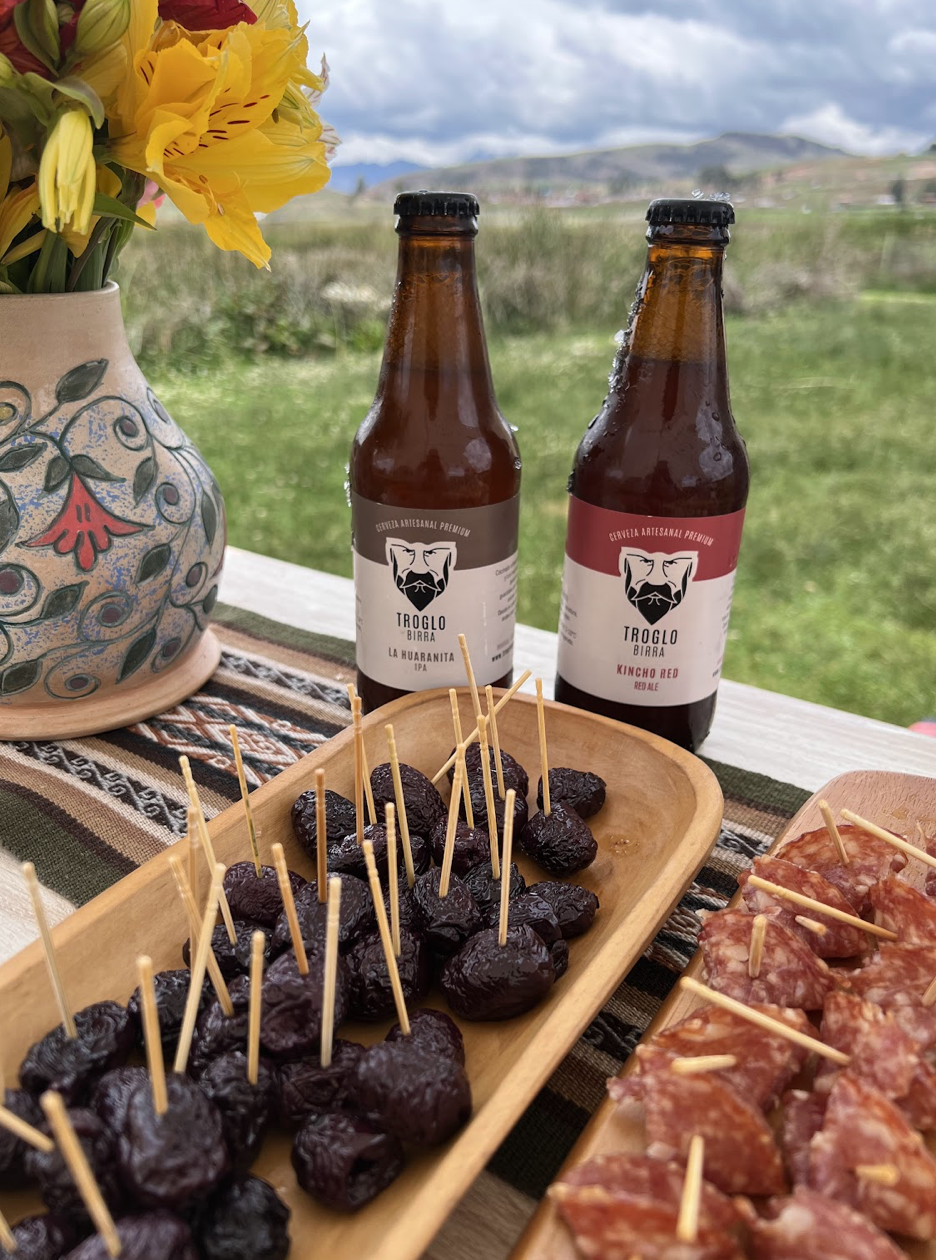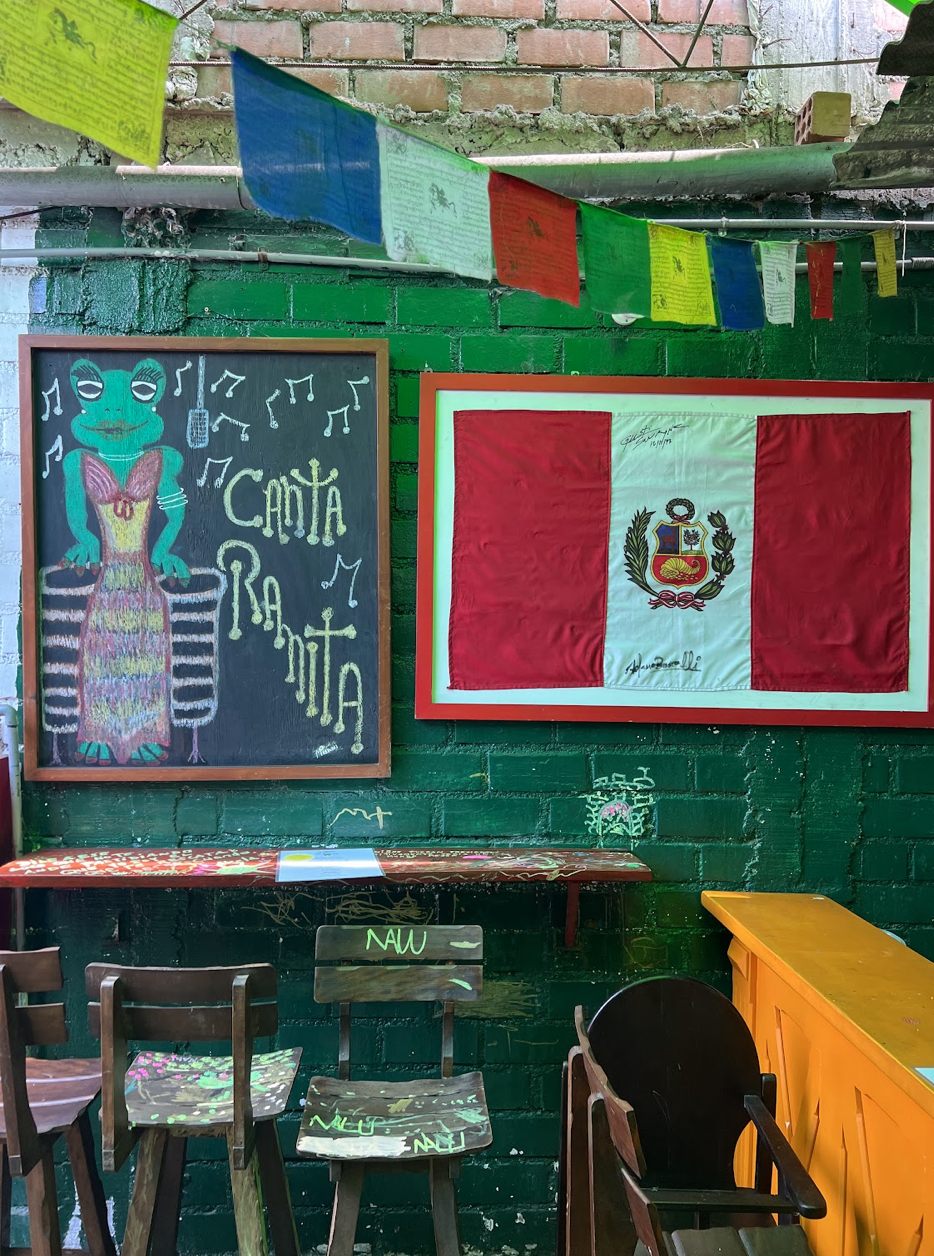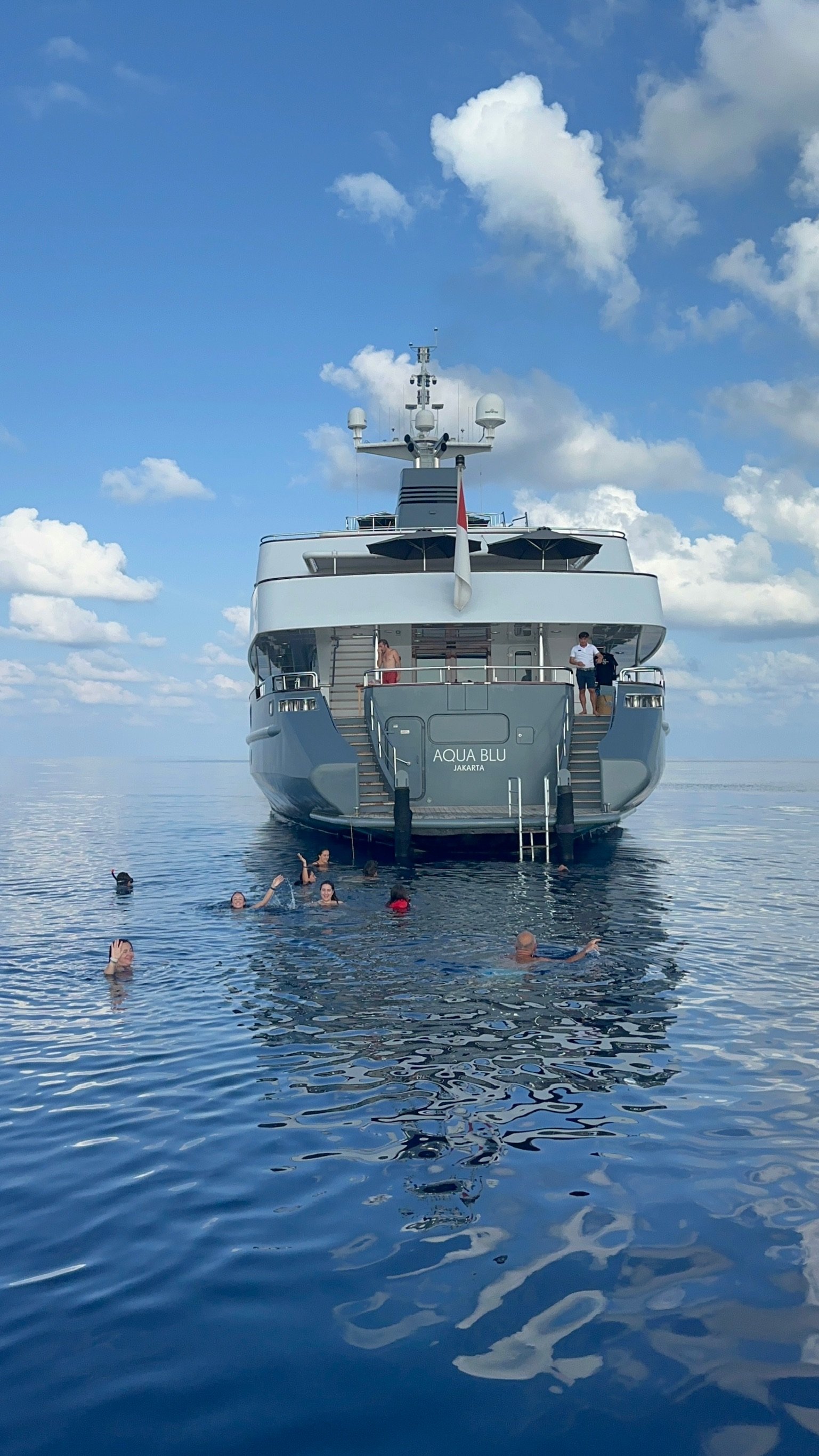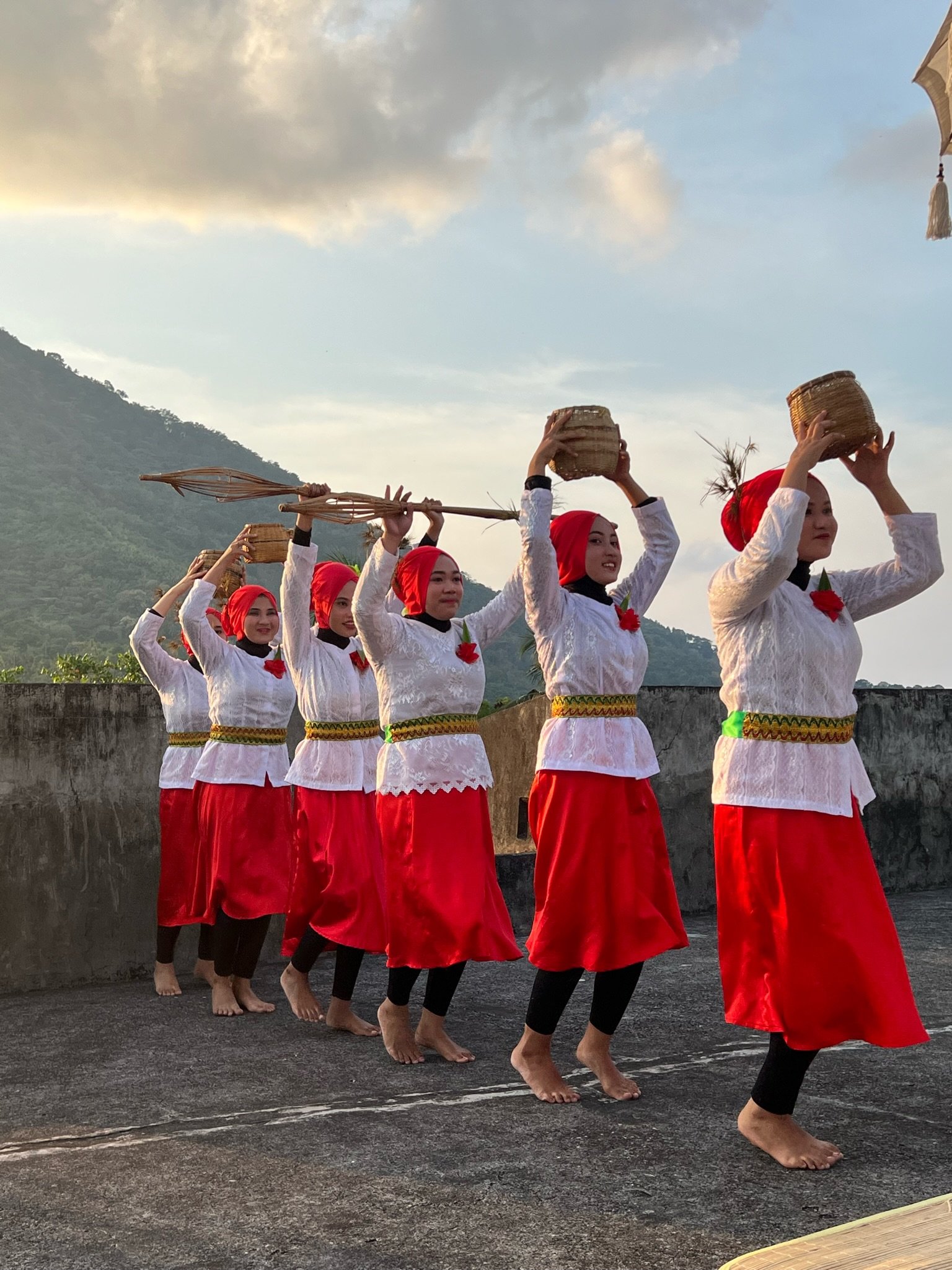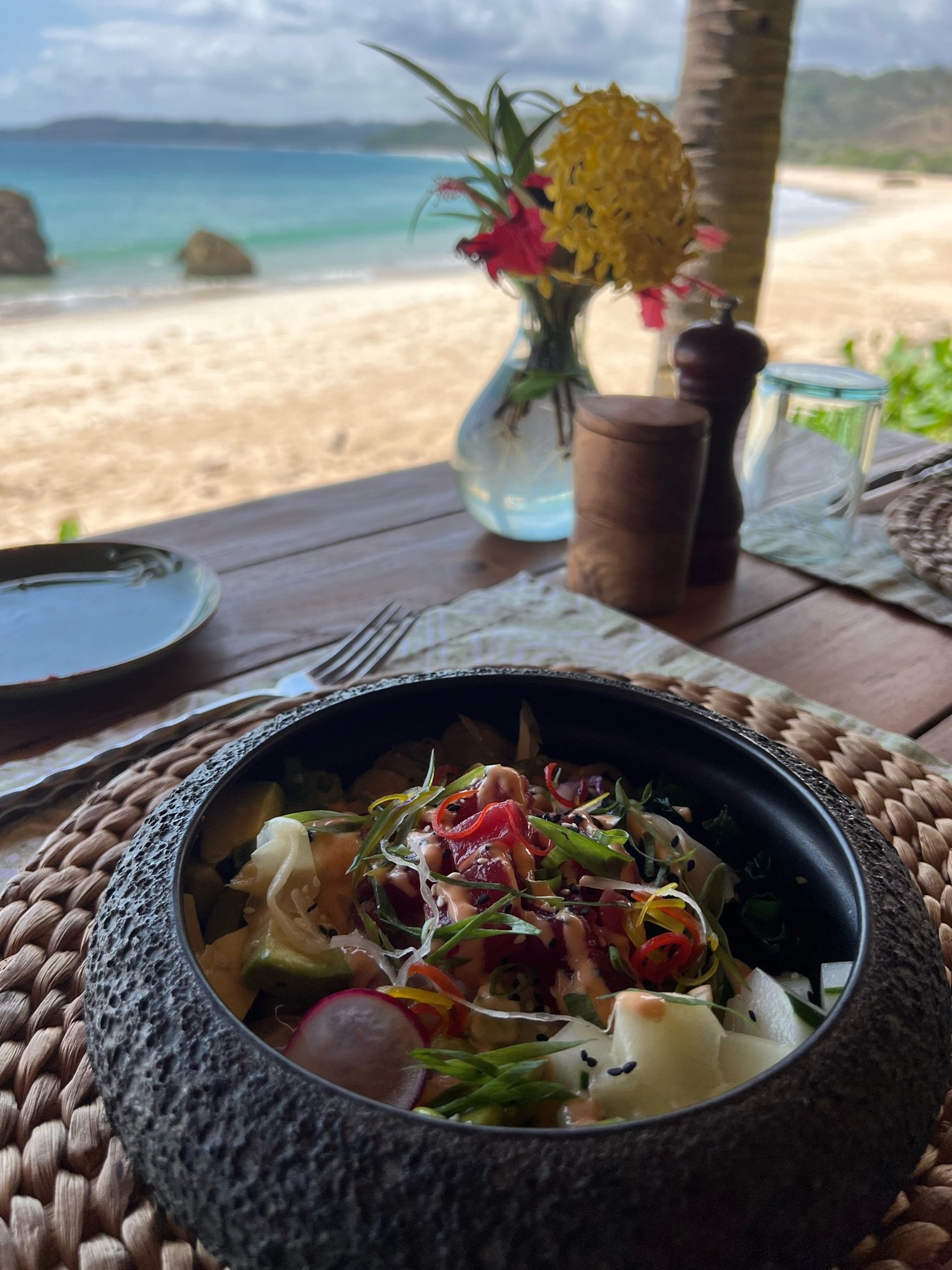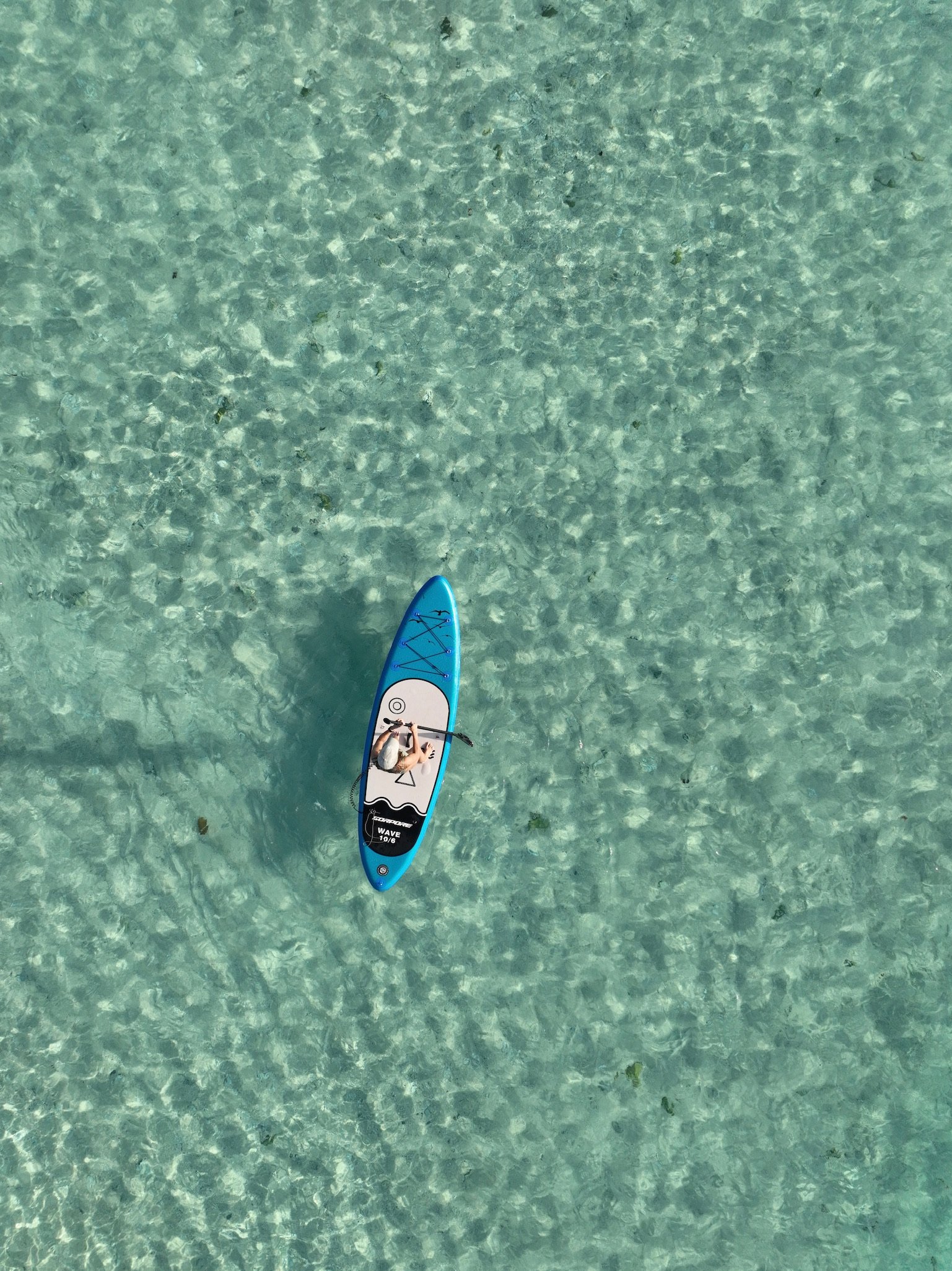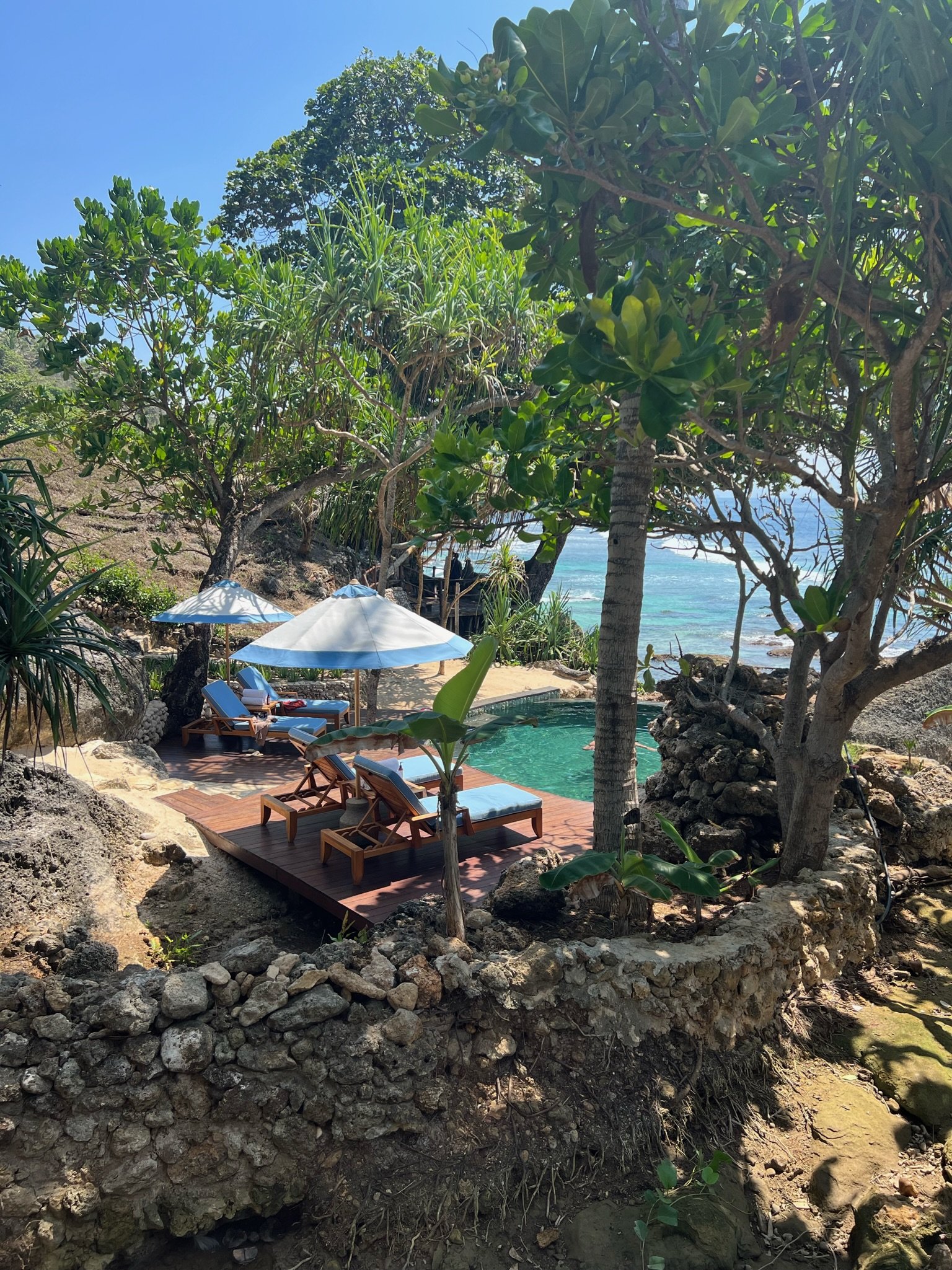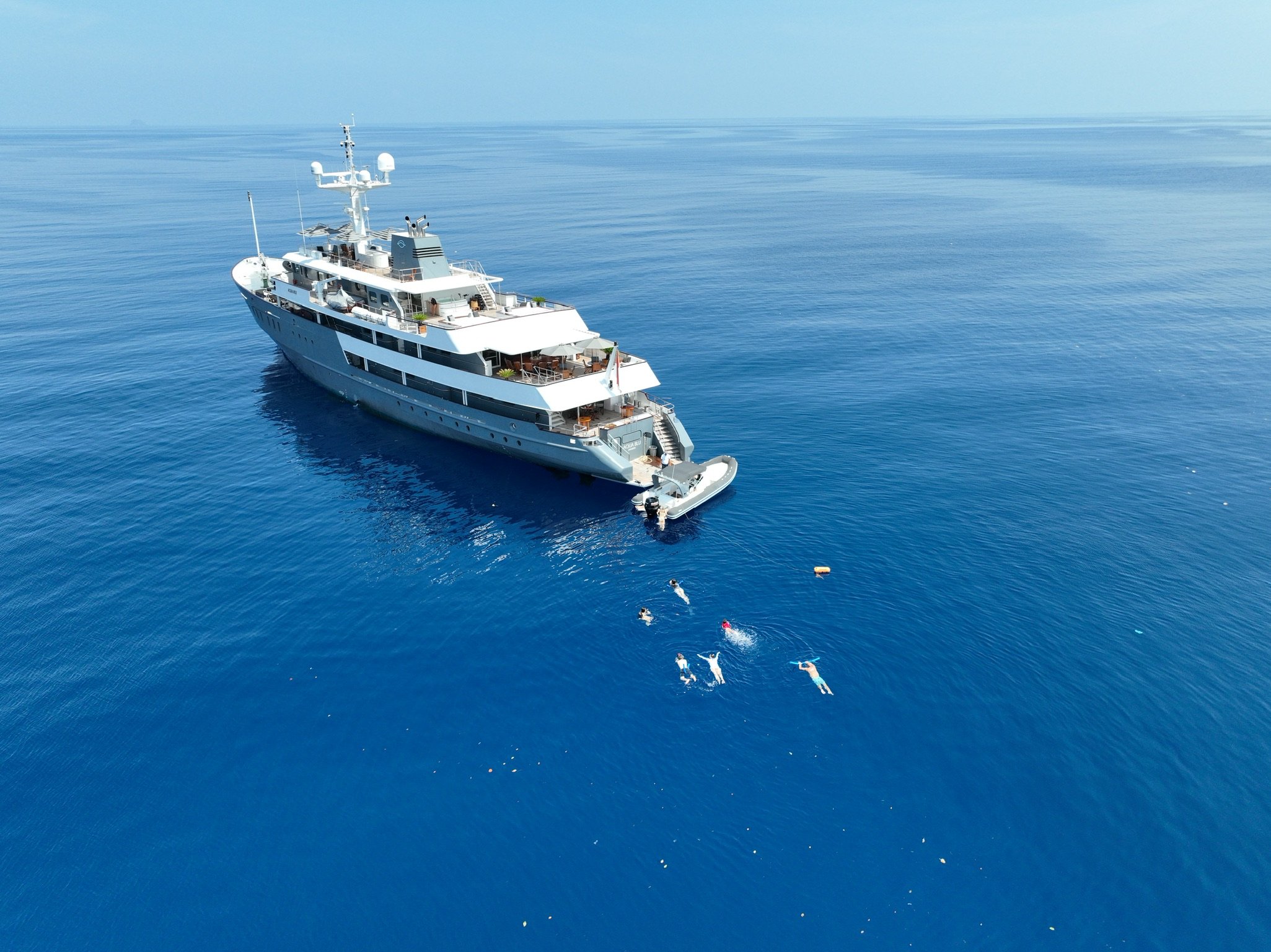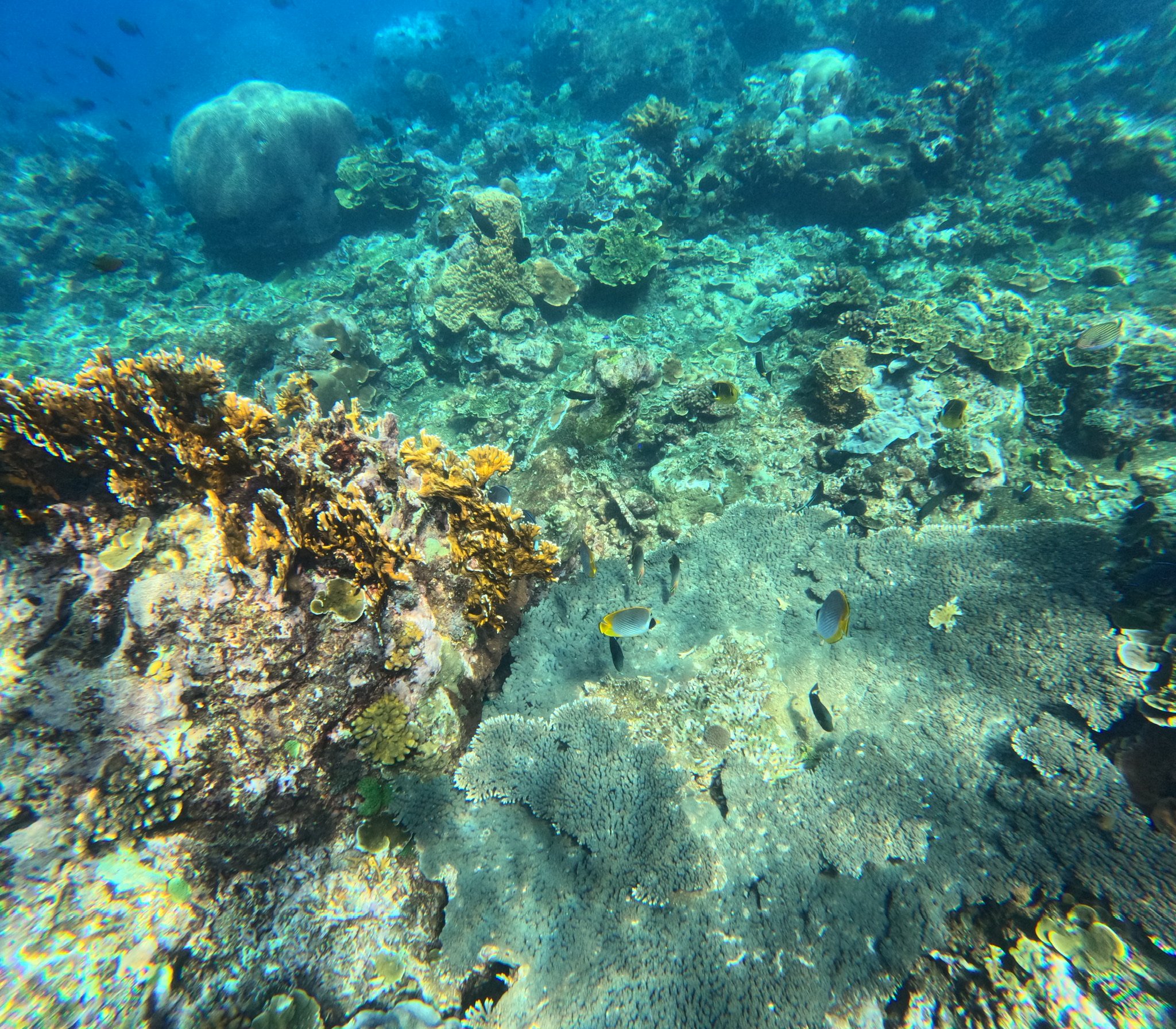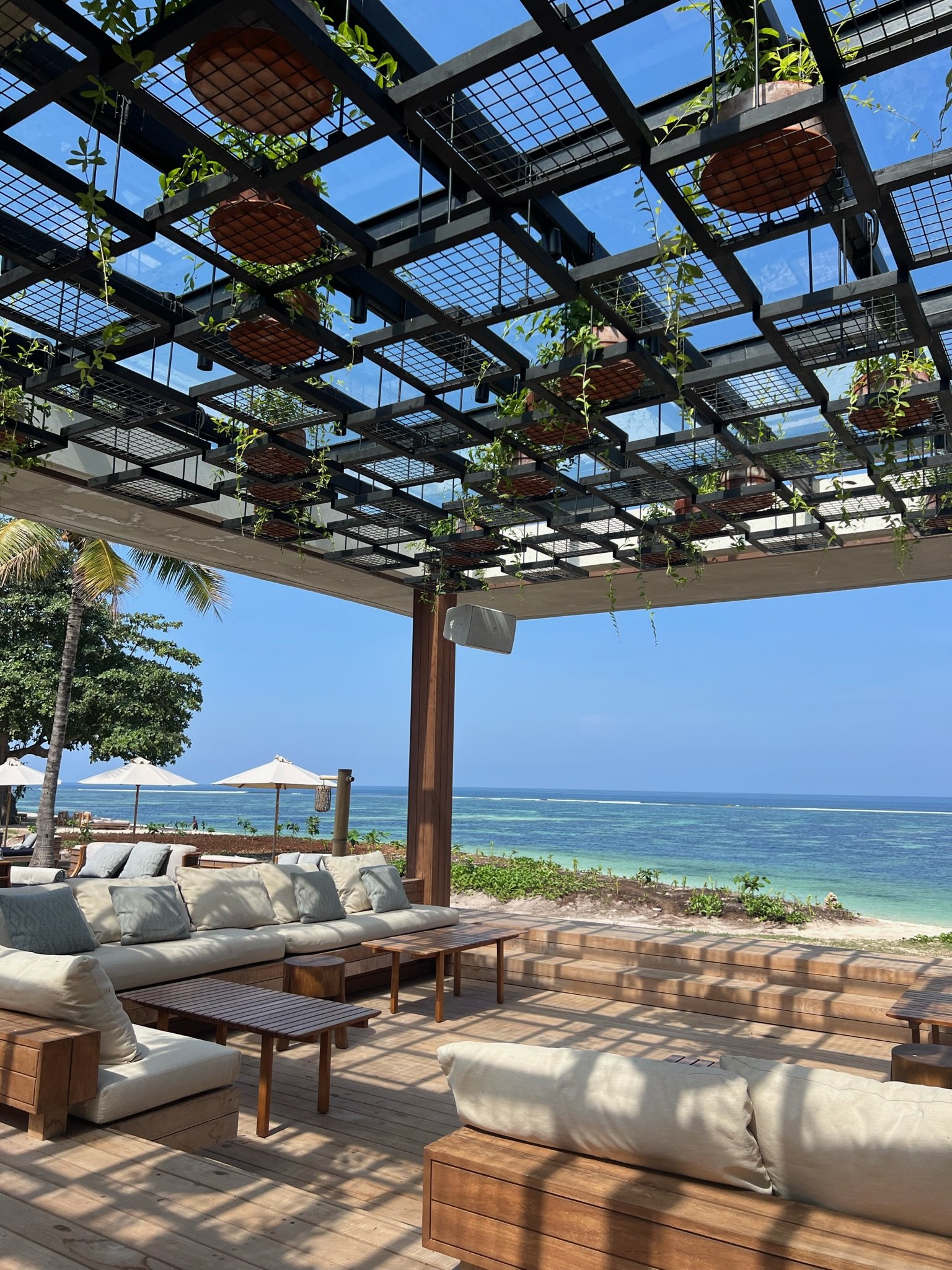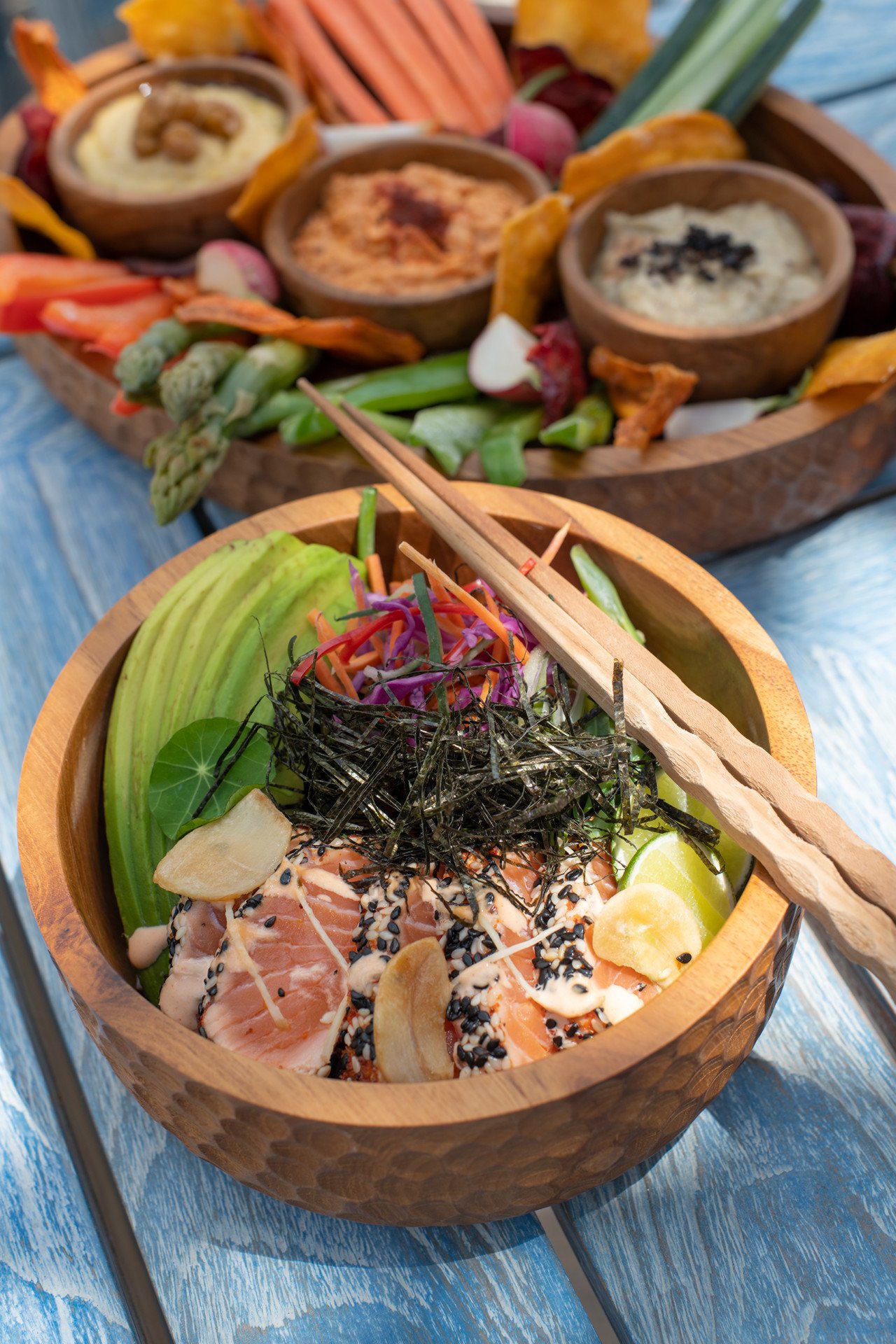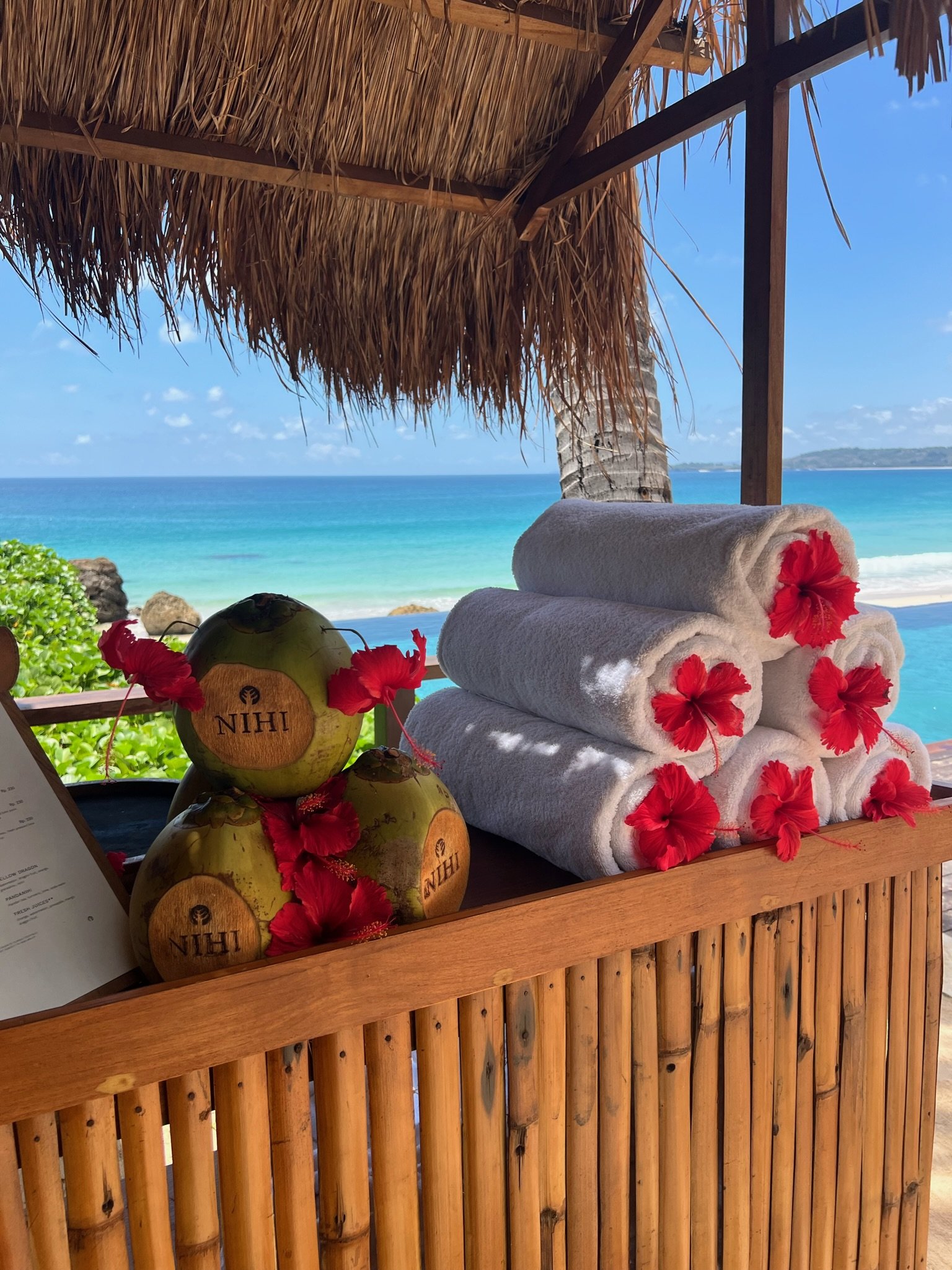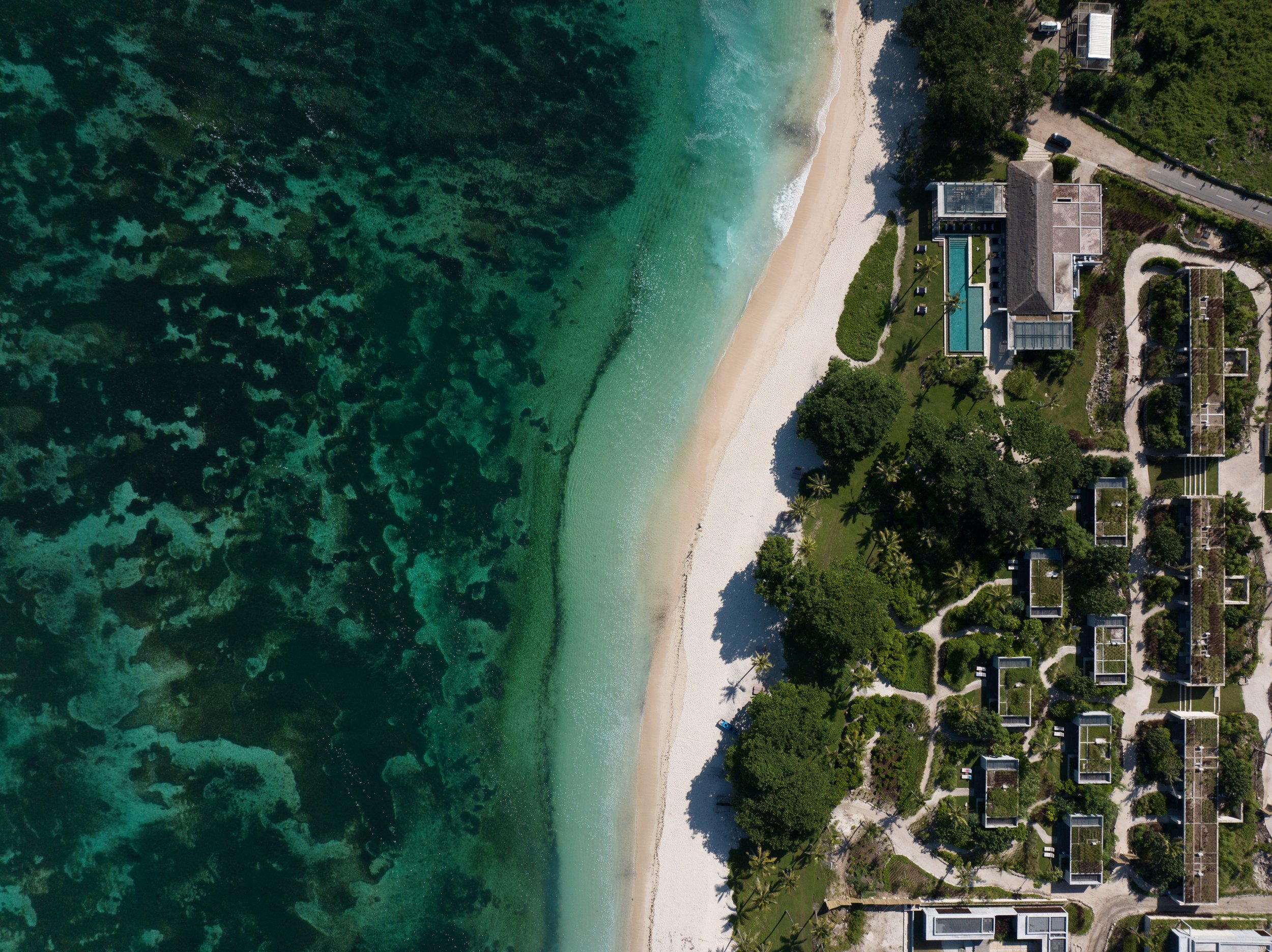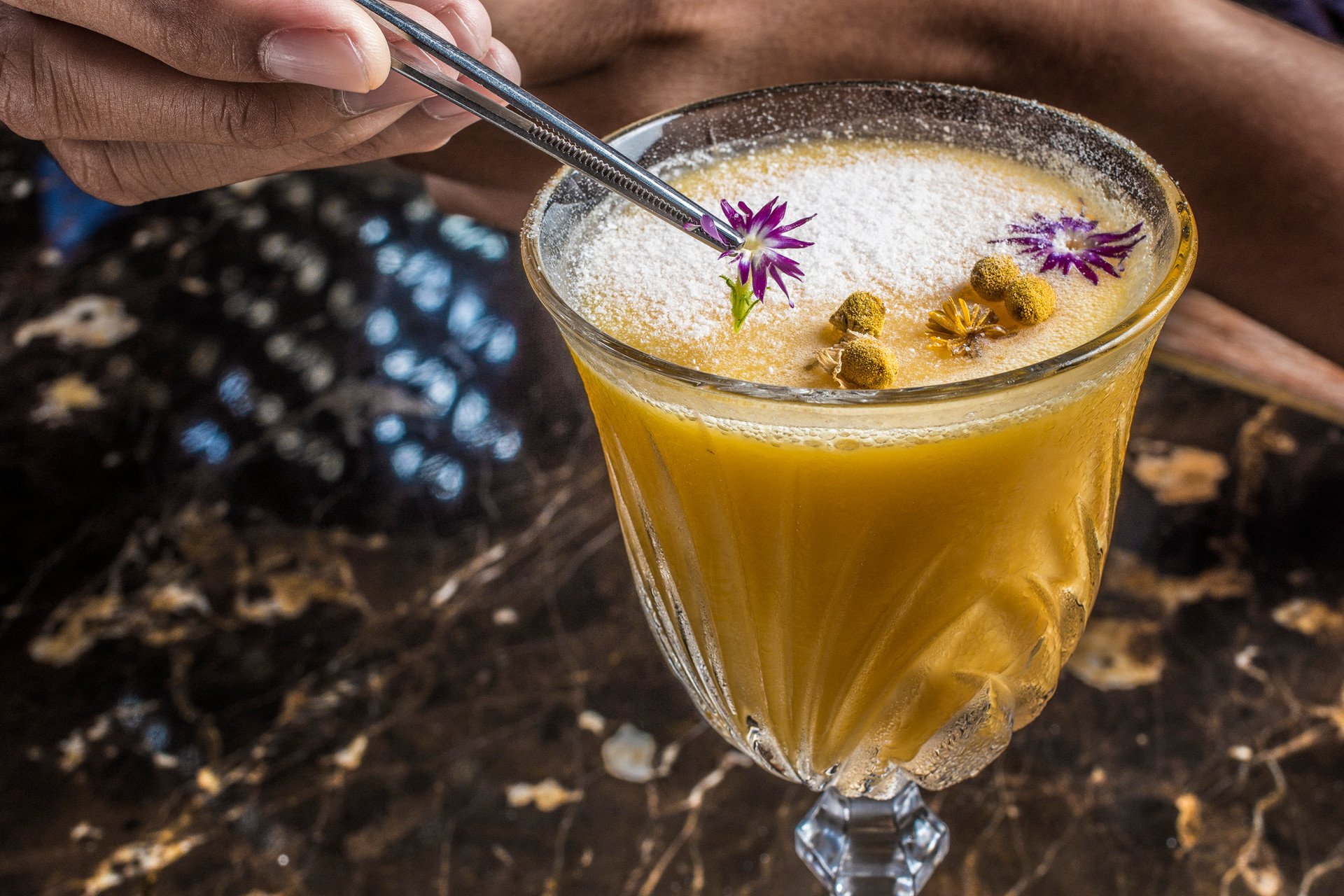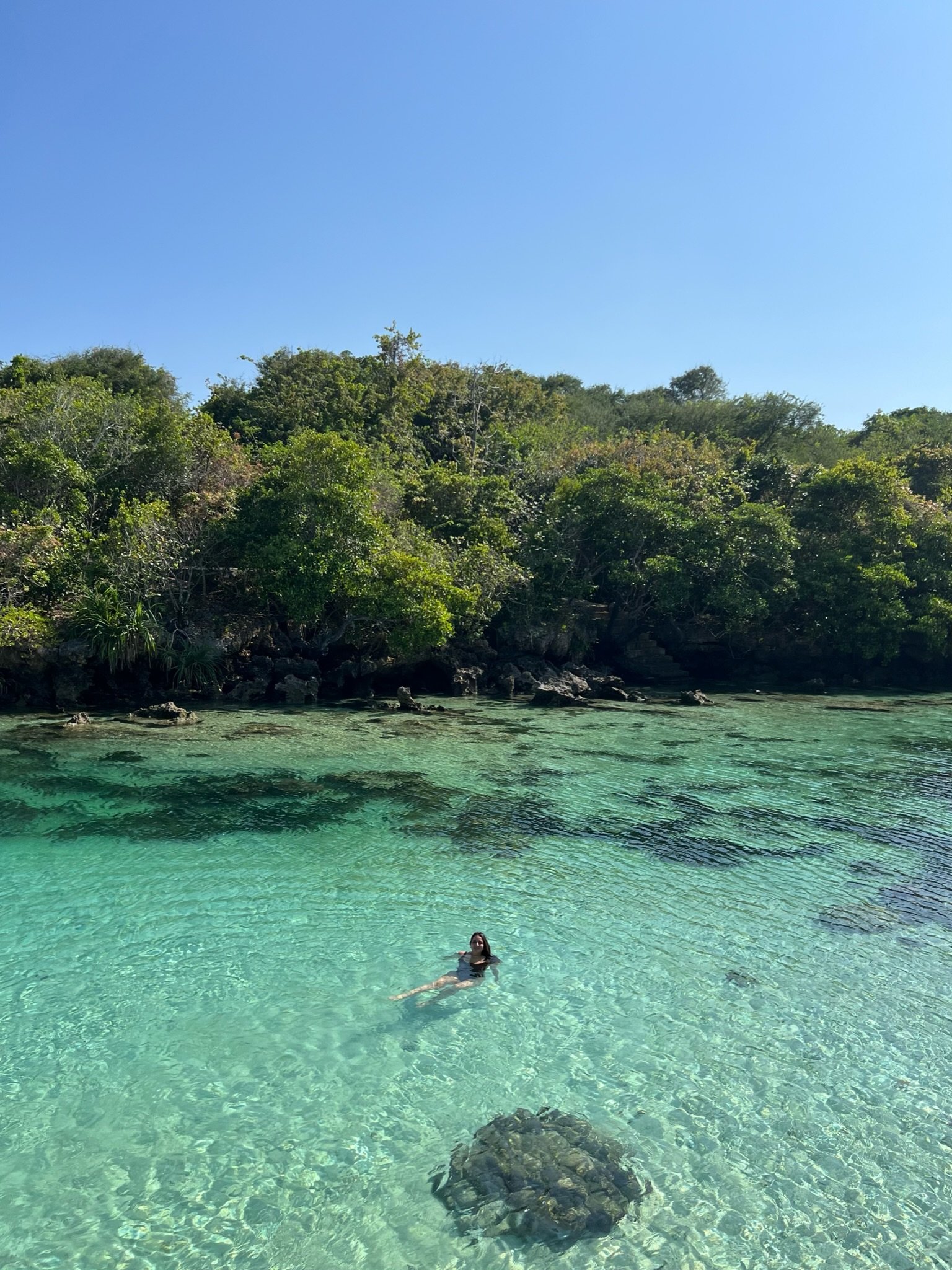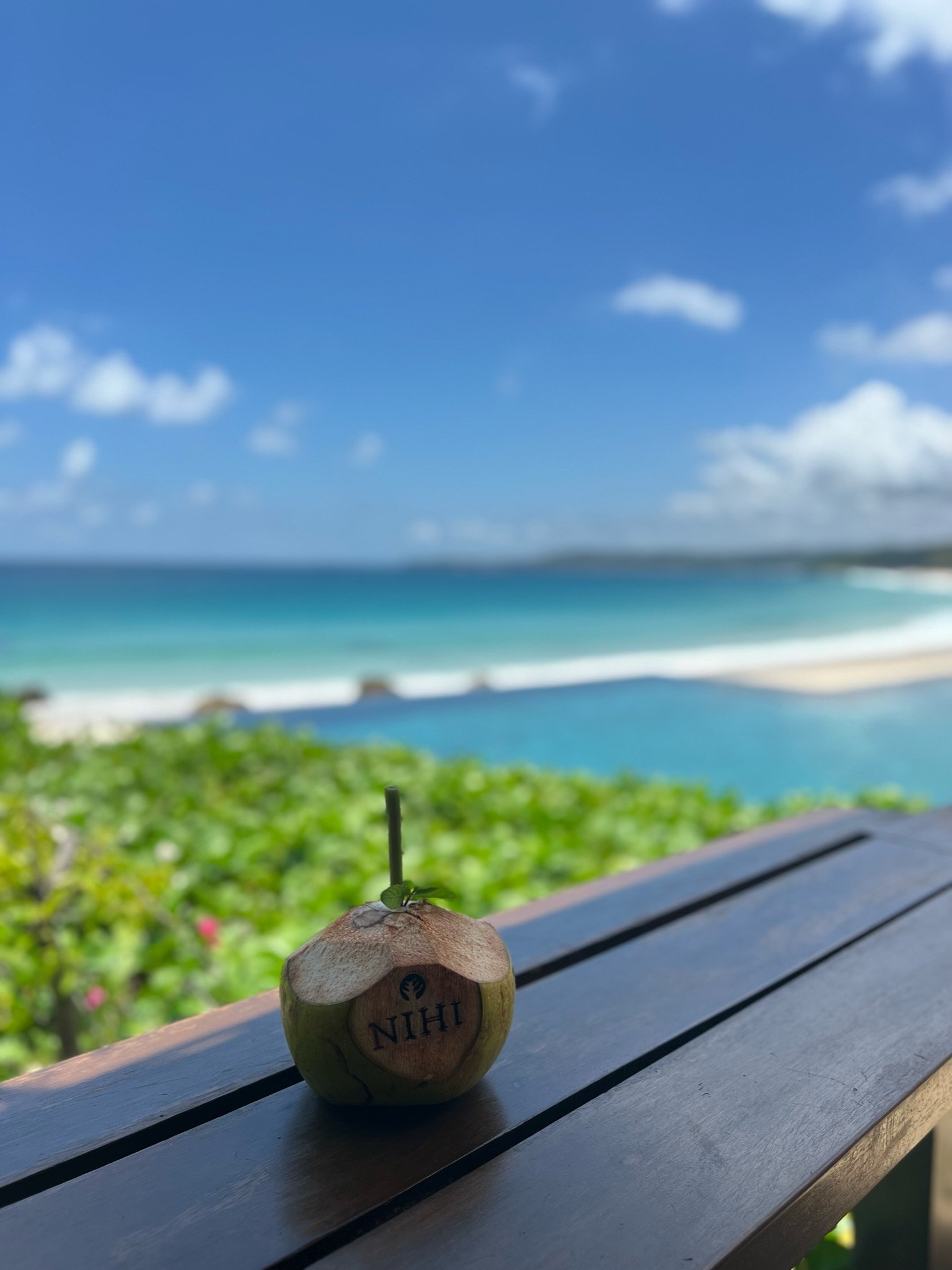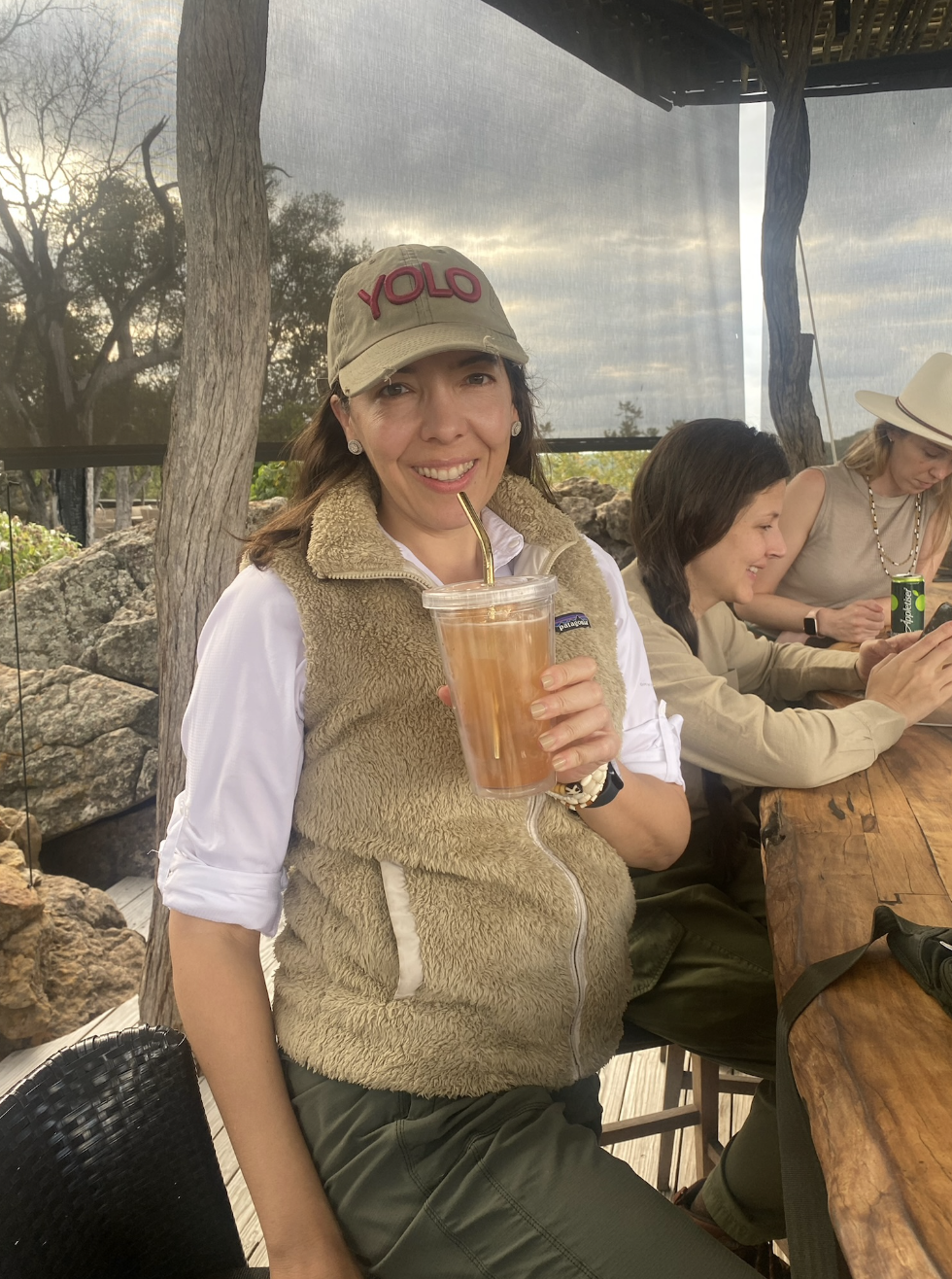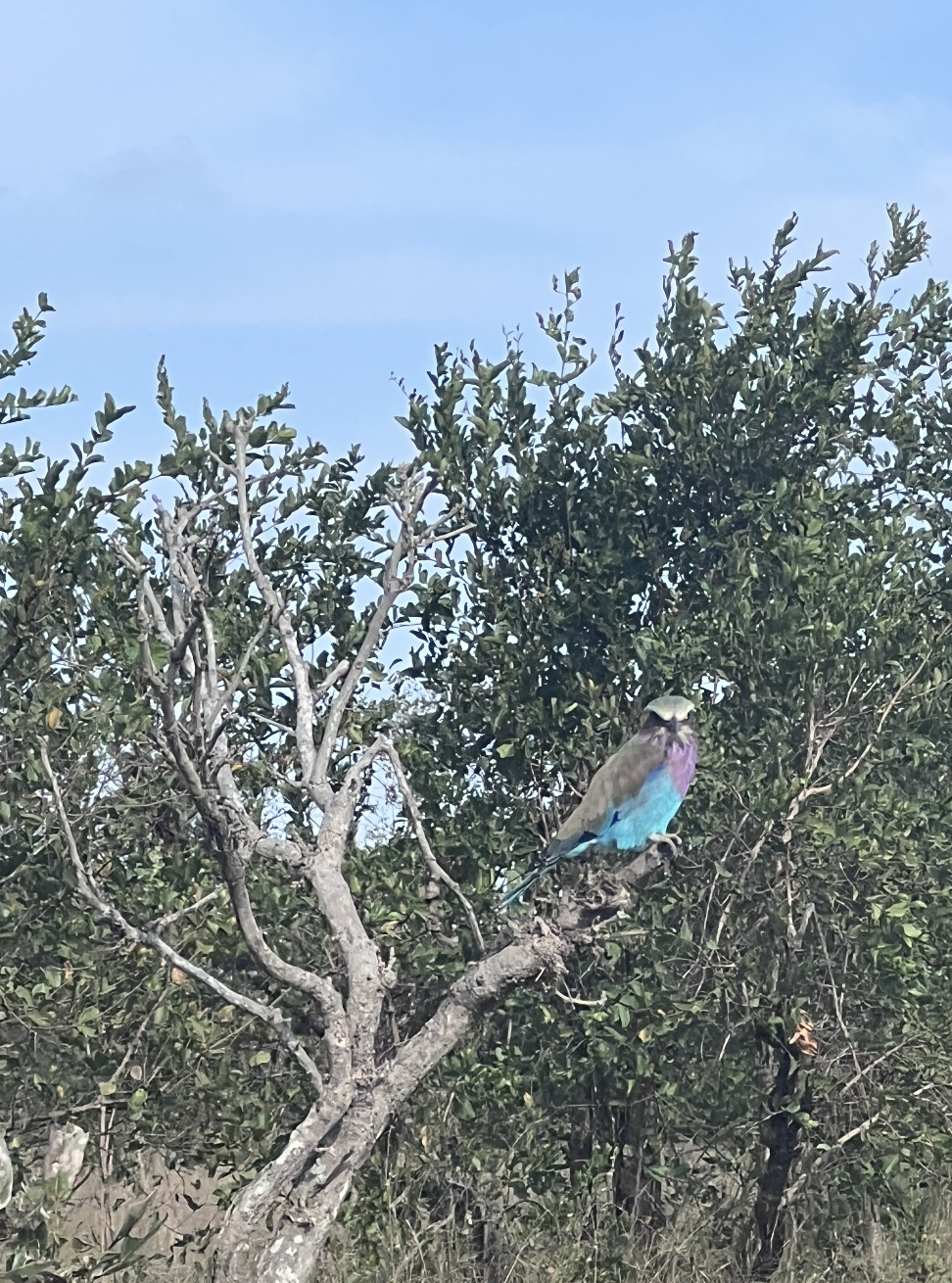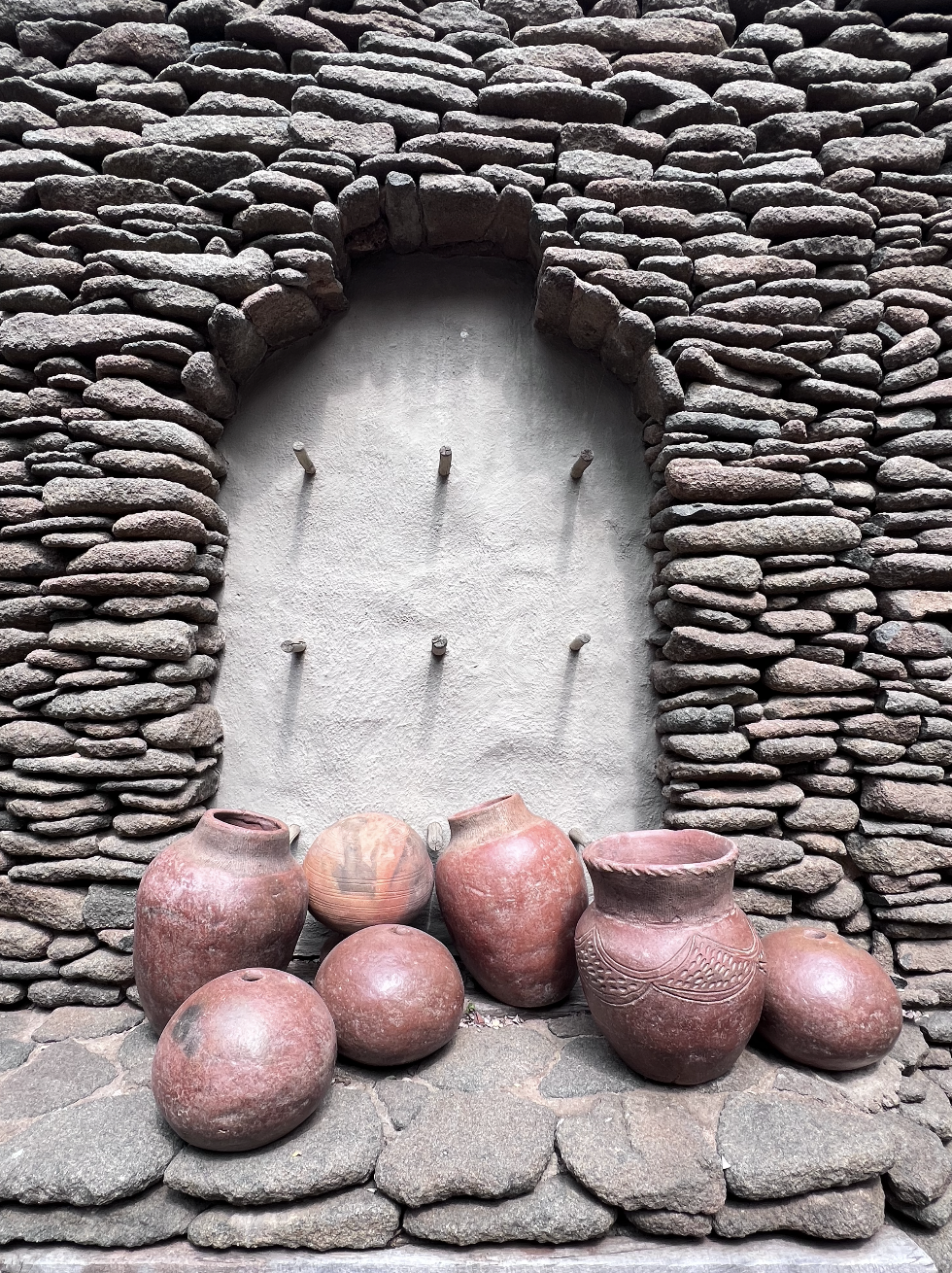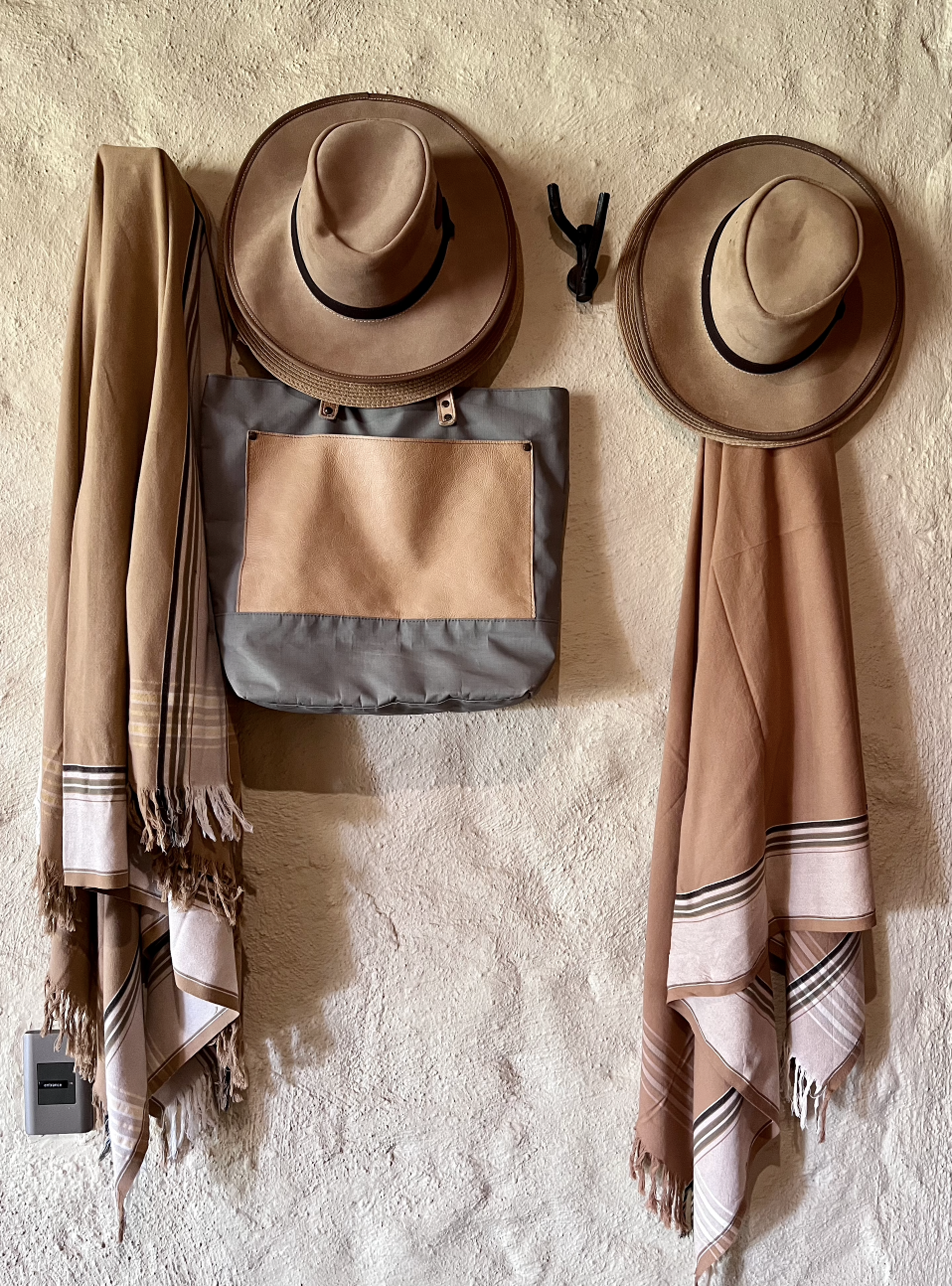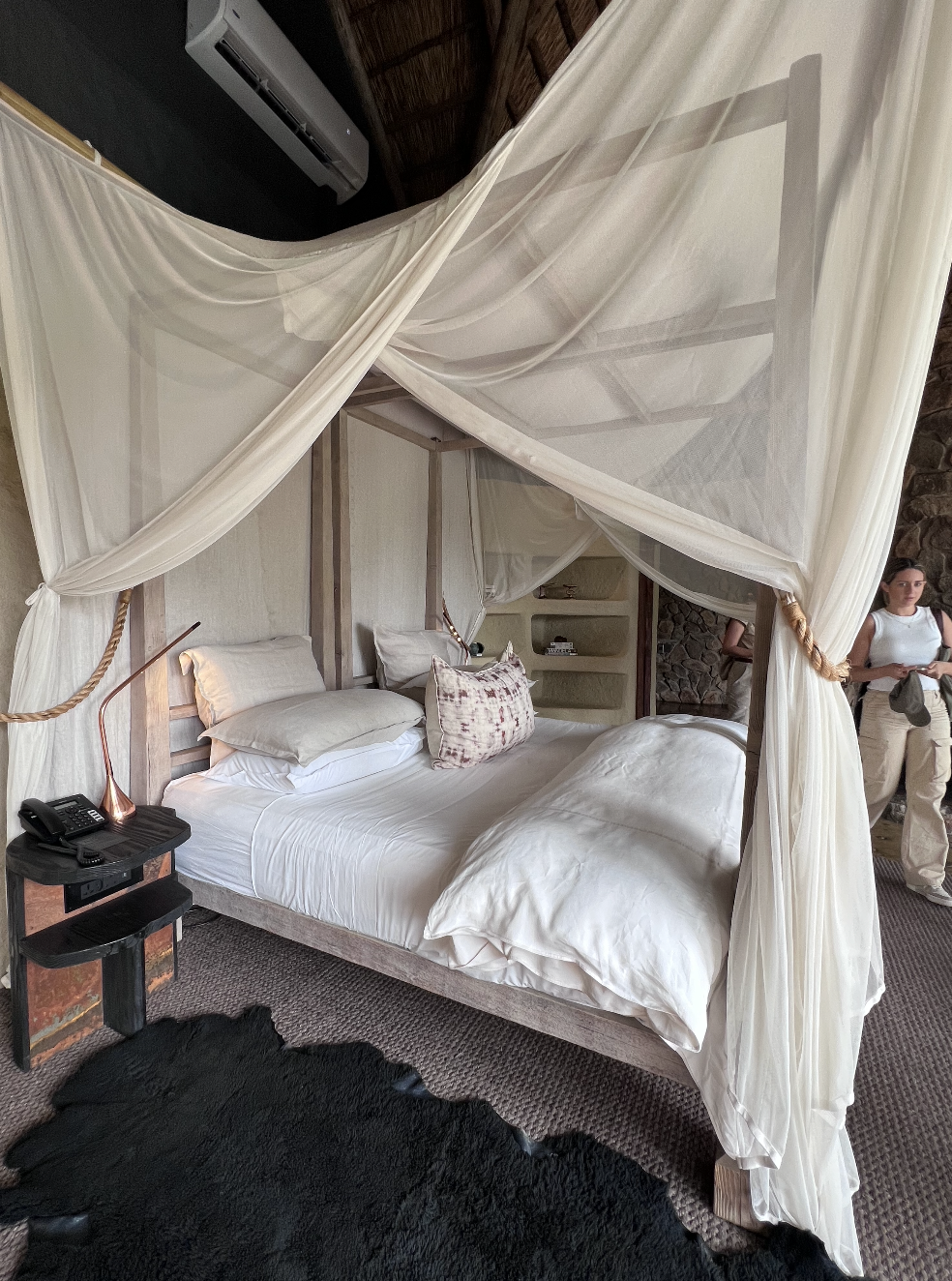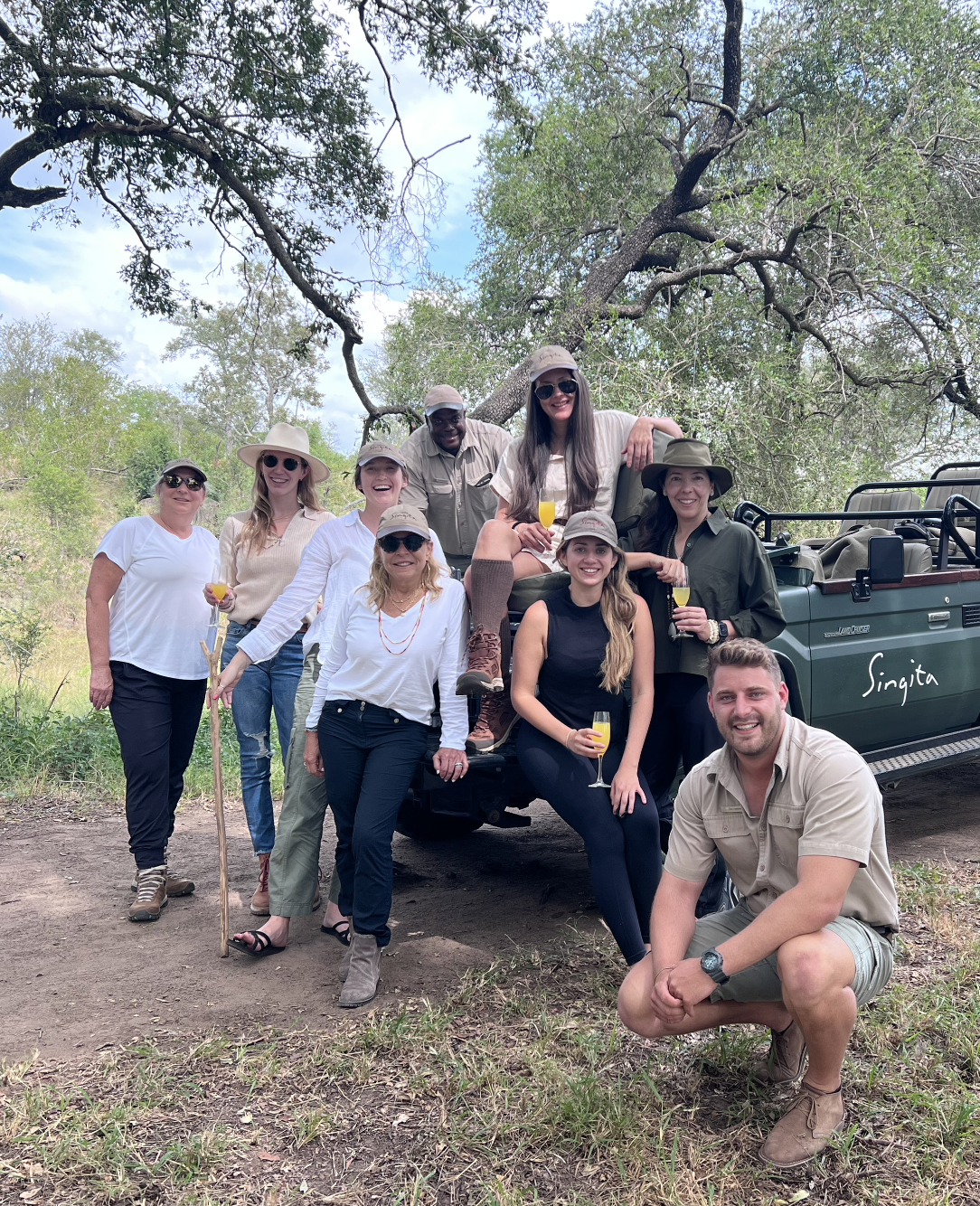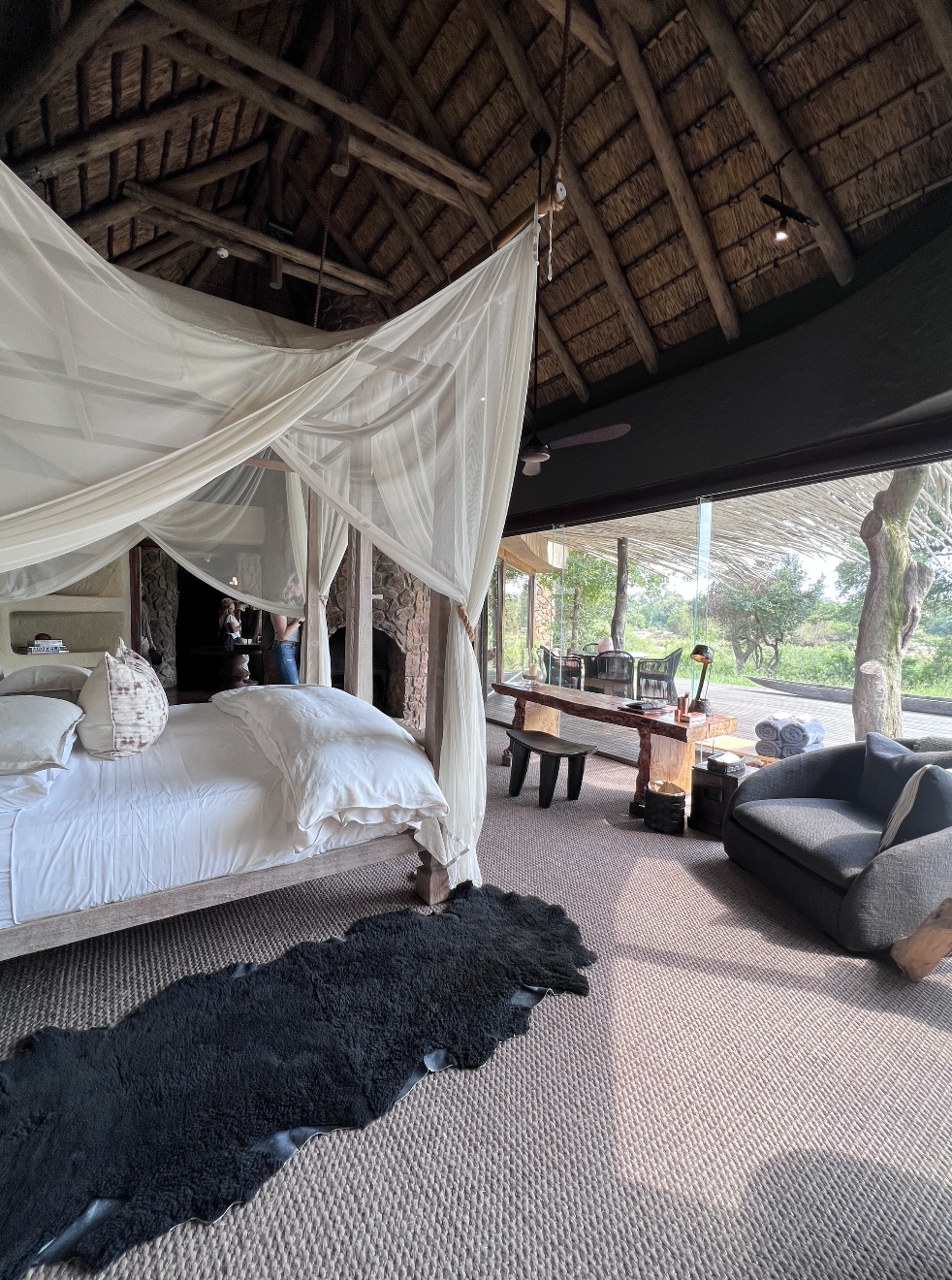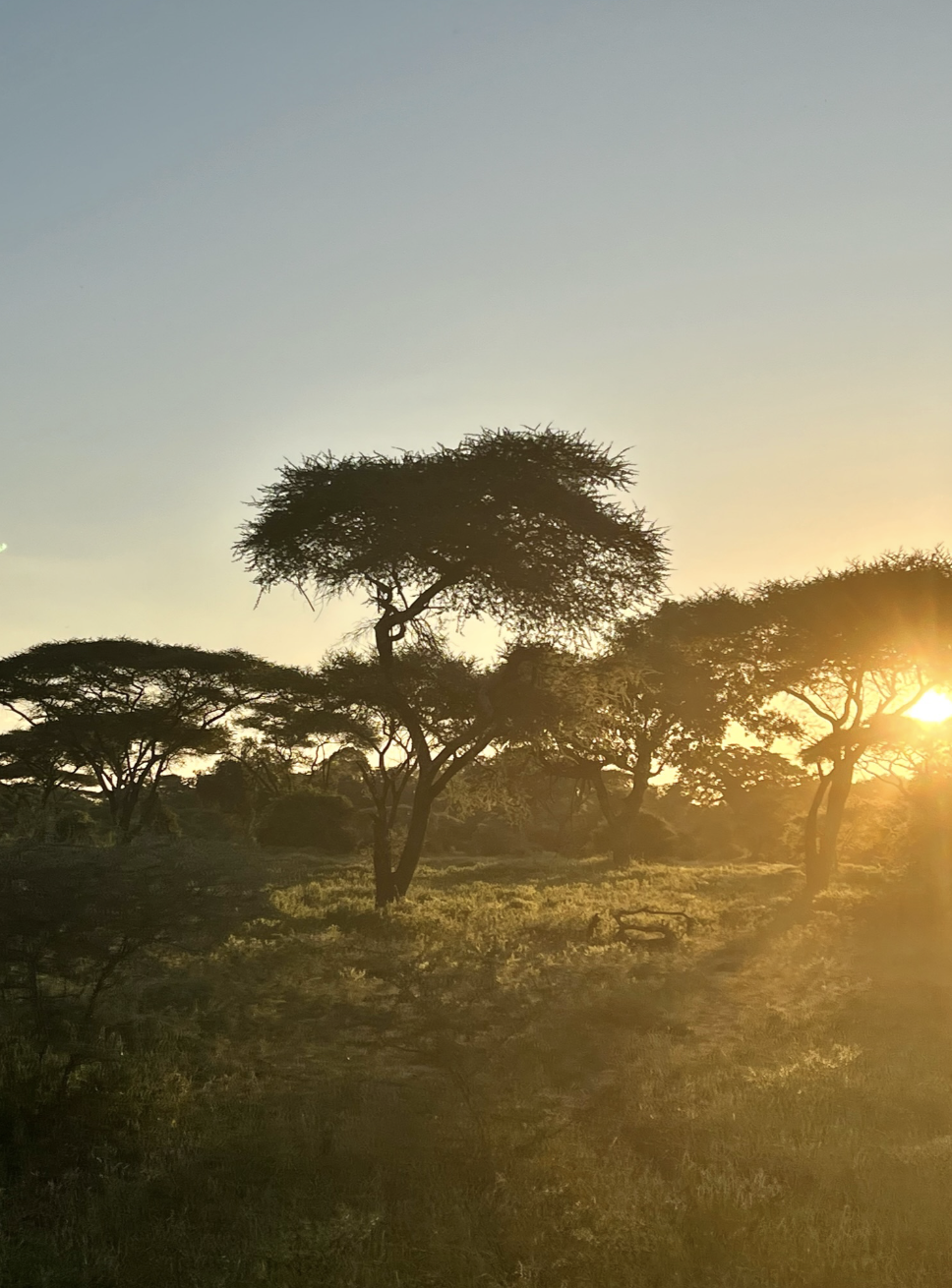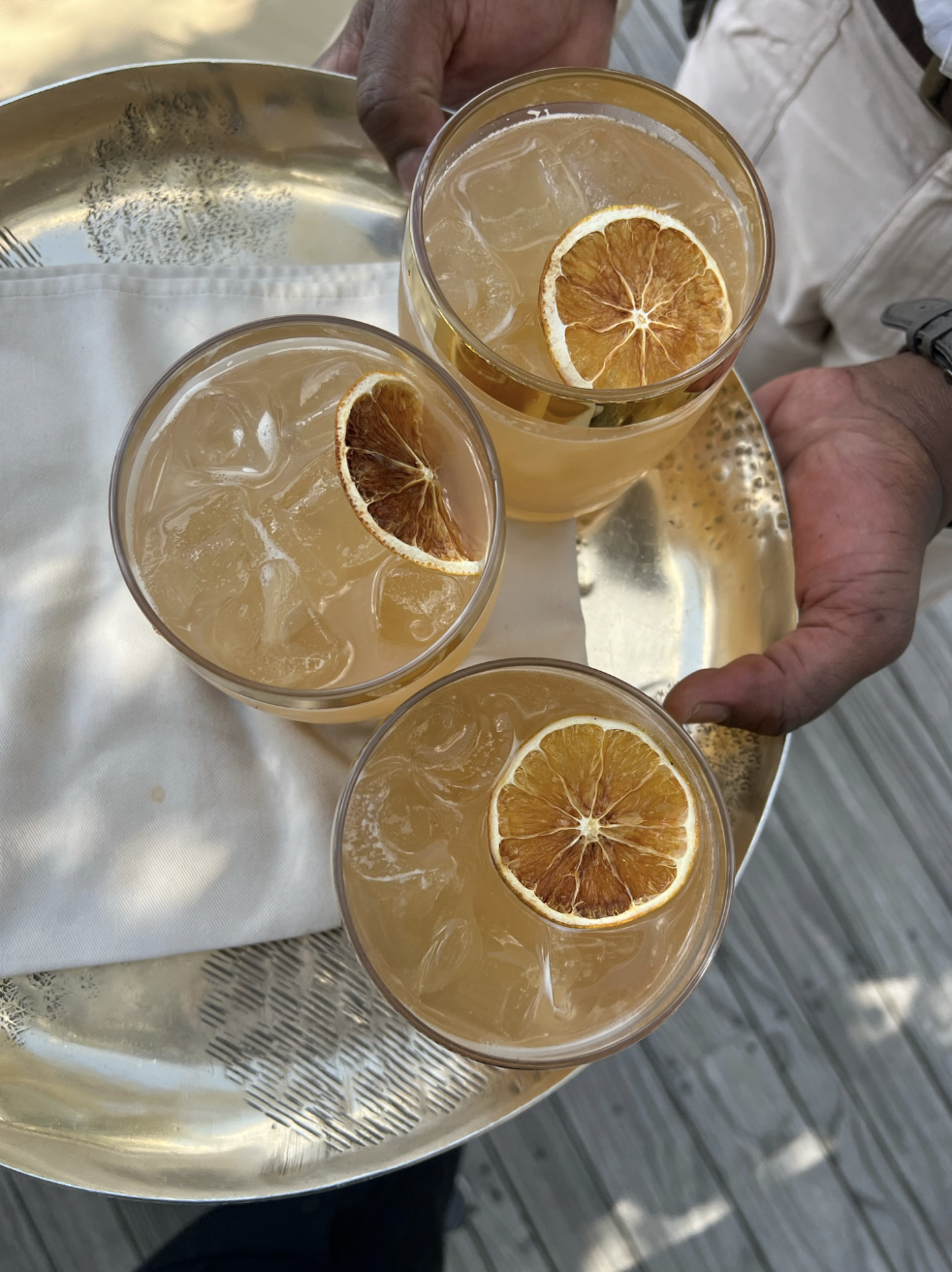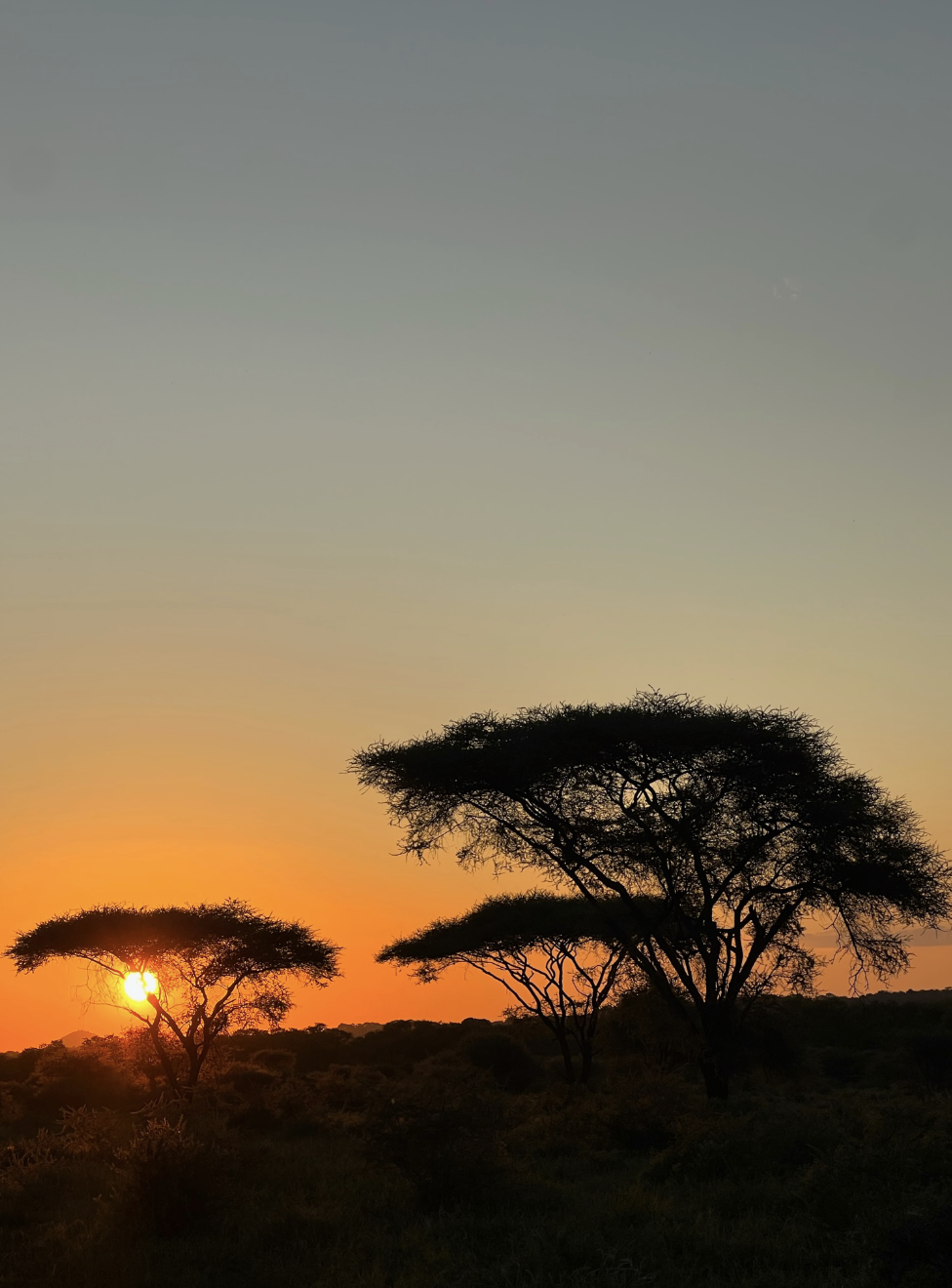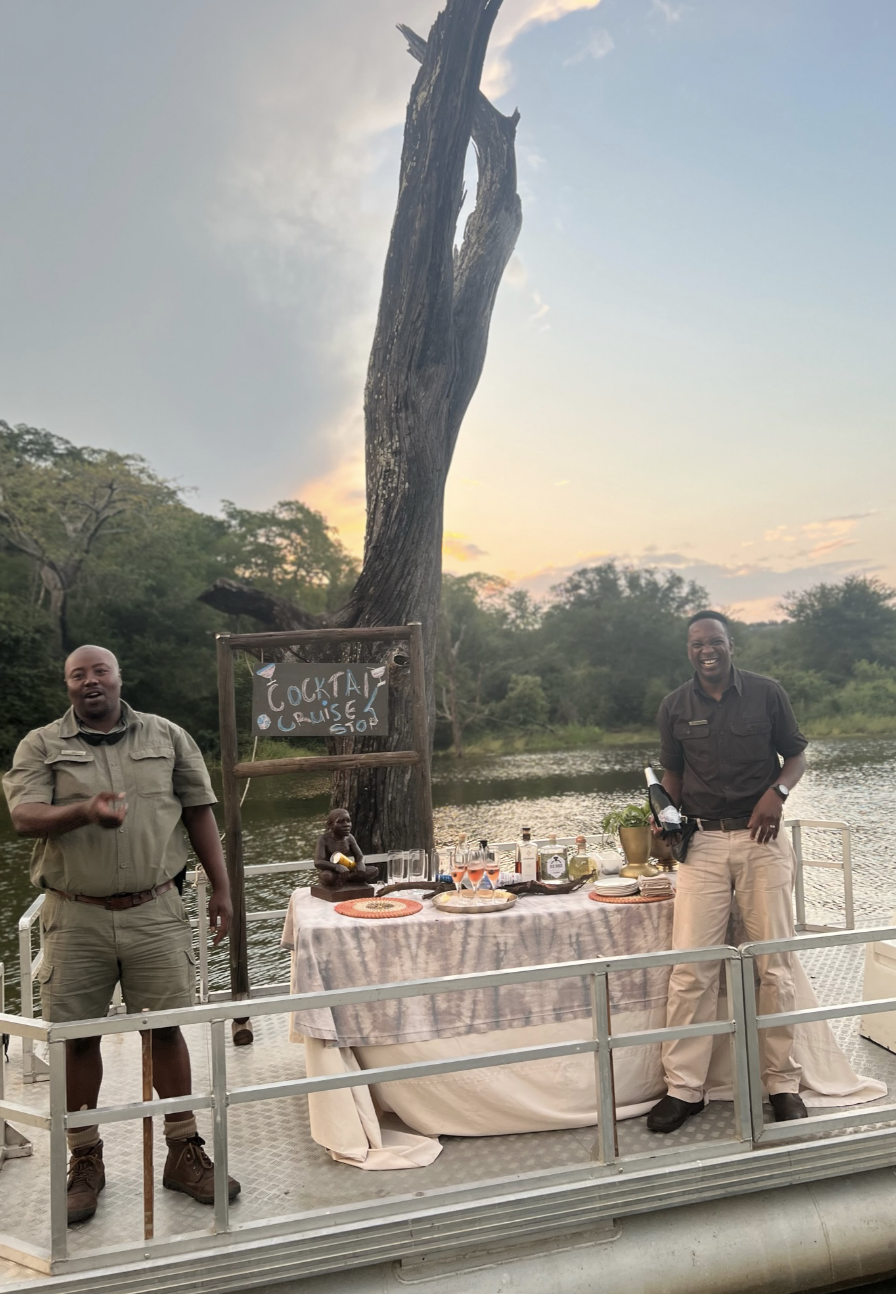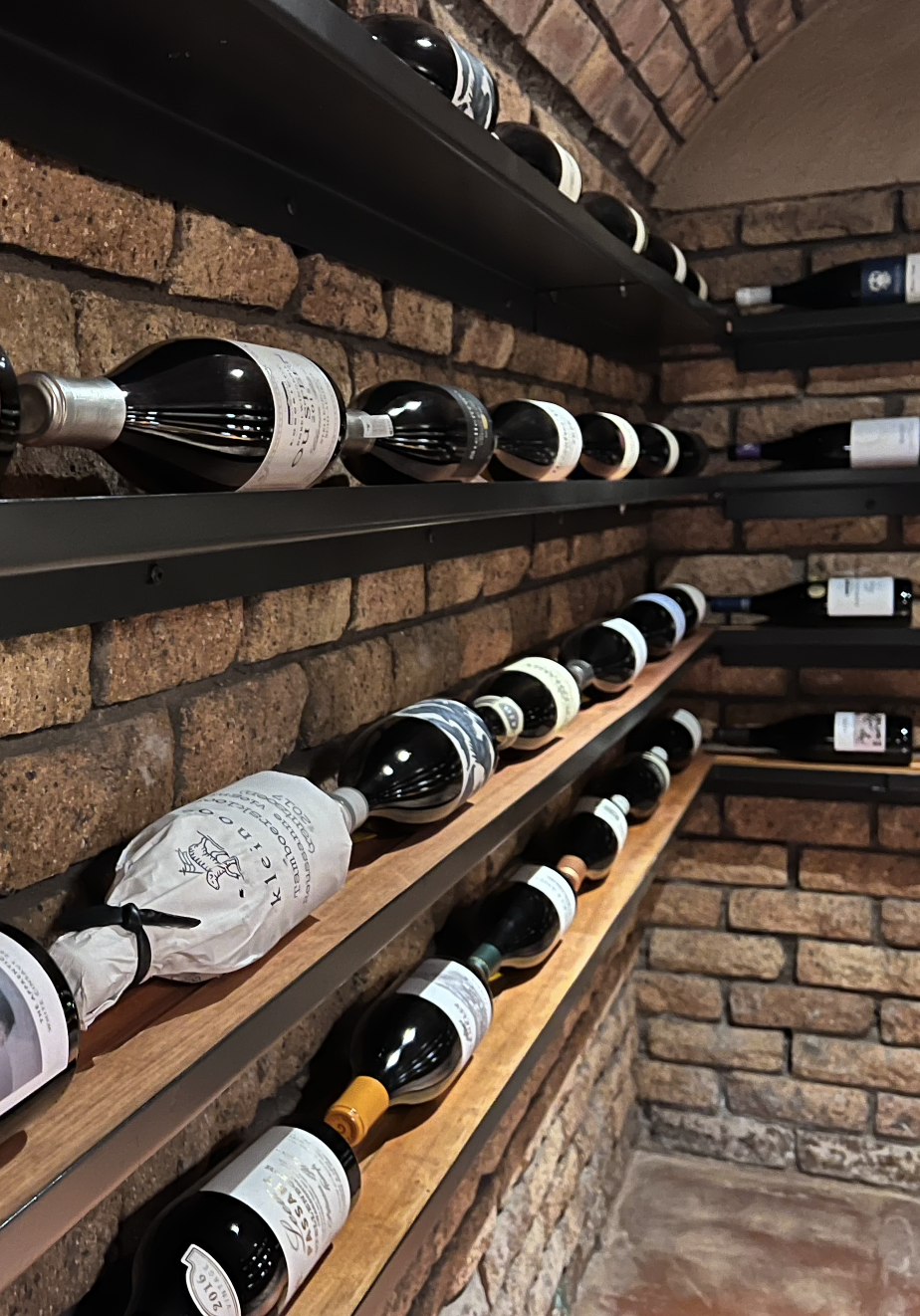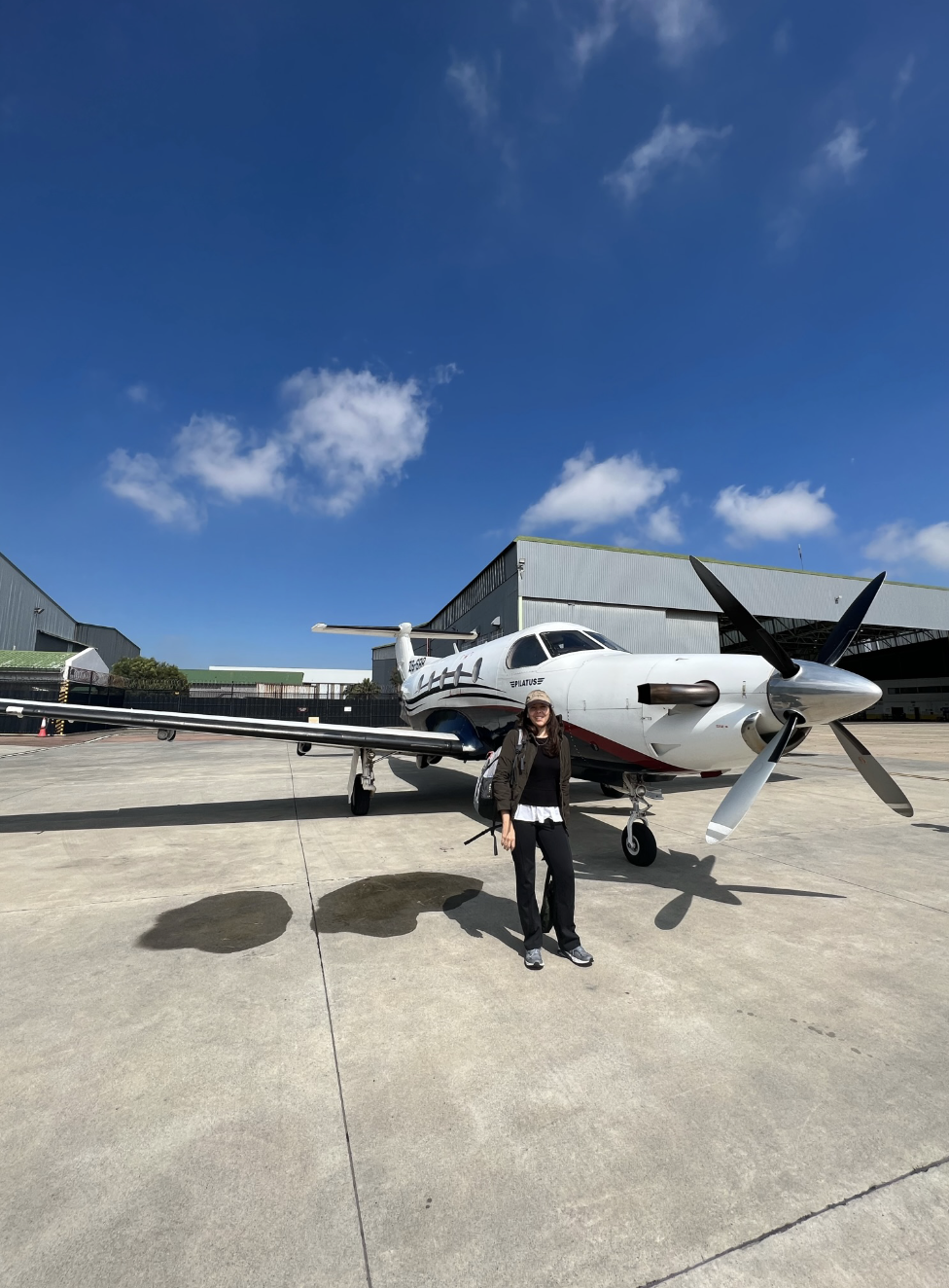Peru Beyond Machu Picchu
Carolina Hasbun aboard the Belmond’s Andean Explorer in Peru
From the streets of Lima to the serene waters of Lake Titicaca, we were immersed in Peru's rich tapestry of culture, history, and natural beauty, including an exquisite journey on Belmond’s Andean Explorer.
Where Luxury Meets History
Starting at Peru’s gastronomic center, the capital city of Lima provided an introduction to the country’s rich heritage and diversity through its cuisine and Spanish-influenced architecture. The flat desert and cliffside scenery changed quickly as we were transported to the rural areas of Peru, with stays at the most exclusive properties such as Tambo del Inka in Sacred Valley. Located 2,800 meters above sea level, our stay was nothing short of excitement with ATV tours through bewildering Incan ruins, a visit to the salt mines of Maras, alpaca sightseeing, and of course - a trek through Machu Picchu’s iconic citadel. Followed by a stay in Cusco, the heart of the Inca Empire, our days were filled with vibrant Quechua history, from architectural wonders to weaving traditions that are still alive and thriving within the local community.
And just when we thought peak altitude was reached, Belmond’s Andean Explorer took us on a slow journey up to Puno, where we checked in at Titilaka Hotel, a Relais & Chateaux 5-star gem located at 3,812 meters above sea level. Among Lake Titicaca’s haven of tranquility and serenity, the hotel’s all-inclusive experiences created a perfect balance of relaxation with floating island visits, boat rides, and star gazing lessons. After three nights of unforgettable moments by the lake, we descended back to Lima for an overnight stay - enjoying one more gastronomic delight before heading home the next day.
Starting in the heart of the Inca Empire, with stays at some of the most exclusive properties in Peru, the Belmond Machu Picchu Sanctuary Lodge offered an unparalleled experience, nestled right beside the iconic citadel. Imagine waking up to the first light over Machu Picchu, an exclusive privilege that allowed us to experience the site in solitude before the day's crowds arrive.
Further enhancing the journey, the Titilaka Hotel, a Relais & Châteaux gem on Lake Titicaca's shores, provided a haven of tranquility and gourmet excellence. With all-inclusive experiences, this boutique hotel made each moment by the lake unforgettable.
Adventures Beyond the Ordinary
Our itinerary was crafted with the spirit of adventure in mind. Upon landing, the excitement kicked in with a thrilling sandboarding experience in Chilca, Lima’s desert (Fun fact: Lima is the driest capital city in the world). This was only the beginning of exciting days ahead.
On the way to Sacred Valley, a called-for stop was made on Lake Huaypo, where a private picnic awaited, accompanied by paddle boards and kayaks to explore the serene surroundings. The following morning, an adrenaline-pumping four-wheel adventure in Maras & Moray added layers of discovery to the journey - as the off-road path led to the vast terraces of Moray and prehispanic salt production in Maras. Next on the list came a visit to Machu Picchu and an exhilarating hike to the summit of Wayna Picchu. After two hours of trekking, the privileged views down to the Citadel made every drop of sweat count.
Adventure continued in Cusco, as we embarked on a day trip to explore the less-trodden path of the Rainbow Mountains in Vinicunca. Passing through herds of alpacas and llamas, the hike also offered astonishing views of the Inca and Huasaqocha snow-capped mountains. Not only was every activity a time to bond and connect with local culture, but also a testament to Peru's diverse landscape.
A highlight was the culinary expedition in Cusco, offering an intimate glimpse into the local flavors and traditions. This, combined with a private picnic at Lake Huaypo, showcased the personalized experiences that define travel when curating trips for our clients. We learned the process behind Cusco’s unique Andean cuisine connecting them to the land and the people who depend on them. This interactive experience included a visit to a local market before heading to a beautiful gastronomic space with views of Cusco.
A Culinary Odyssey
It’s no secret that Peru's gastronomy is a world-renowned treasure. From the fresh ceviches of Canta Ranita, a tucked away stall at a local market, to the innovative creations at Maido and the traditional flavors at Isolina, each meal was a celebration of Peruvian cuisine. A highlight outside of Lima was Mil, a working food lab and culinary experiment by chef Virgilio Martinez that plays with the region’s diversity and endemic harvest, offering a unique dining experience that beautifully (and deliciously) threaded the rural and urban networks at the core of Peru’s cuisine.
Calling in the Slow Travelers to Peru:
The Belmond sleeper train journey epitomizes the essence of slow travel. Following an action-packed itinerary in the Sacred Valley and Cusco, all while adjusting to the altitude and weather changes, a night aboard the Belmond Andean Explorer offered a much-needed pause and provided an opportunity to unwind and soak in the landscape - complemented by 24 hours of indulgence that included onboard spa treatments, an endless flow of cocktails, live music, and exquisite three-course meals.
On a 3-night journey along the Amazon River with Aqua Expeditions, we had the pleasure of sailing on the Aqua Nera, the fleet's latest ultra-luxury addition. The essence of the Amazon lies in its tranquility and the immersive serenity of the surroundings. This trip was more than just embracing slow travel; it was about engaging in a gentle adventure. The Amazon's life teemed from dawn, with tender boat excursions for birdwatching that often included delightful sightings of pink and gray dolphins and a close-up look at the area’s iguanas, sloths, and snakes. Aqua Expeditions also provided us with the enriching opportunity to interact with the indigenous communities residing in its secluded villages, who navigate their lives in canoes and rely on fishing, agriculture, and handiwork for their livelihoods. After three nights onboard Aqua Nera, not only were we eager to plan a more lengthy return, but also humbled by the contrast of cultures, landscapes, and traditions encased within a single country.
Pro-Tips:
Take it fast or slow, there's a diversity of landscapes, activities, and luxury hotel offerings to suit your needs. From hiking half day to camping overnight, sleeping on a train or a small cruise, to riding an ATV or on a horse, there is a multiplicity of ways to experience the magic of Peru.
No matter the speed, you will move. Stays at different locations usually range from 2 - 3 nights, so be ready to pack up your bags and hop on to your next destination. Athletic wear and casual clothing is the way to go.
Peru is one of the countries with the most microclimates in the world. Bring layers to keep you covered as the altitude and weather change throughout your trip (you can be extremely hot in Lima and wrapped in baby alpaca clothes in Cusco). You can visit year-round, just pack smart and be ready for a variety of climate changes.
Considering the adventures and amazing sightseeing, Peru makes for a wonderful family-friendly vacation! However, we think it’s best for kids ages 8 and above, Due to changes in altitude and weather.
Gastronomy is top-notch because of the high-quality ingredients harvested throughout. The Andean culture reveres the “Pachamama”, goddess of Mother Earth, who they believe is responsible for the superfoods available from their soil. From quinoa, maca, and lucuma to cacao, be ready to indulge and bring back your favorite natural supplement.
Beyond the Beaches of Indonesia, a Journey of Cultural Richness and Understated Luxury
Twenty-three days, seven islands, fifteen hotels… Here’s a deep dive into our transformative trip through Indonesia. We went in imagining a beach paradise, only to discover the cultural tapestry formed by a country with 6,000 inhabited islands, each with its unique languages, religions, and cultures. From Bali’s surf spots and rice fields to Jakarta’s metropolis, Ambon’s historical significance, and Sumba’s Marapu practices and village life, every encounter created a distinctive learning experience. Biggest takeaway: Indonesia is a mosaic of vibrant diversity, almost impossible to encapsulate in a single adjective.
Twenty-three days, seven islands, fifteen hotels… Here’s a deep dive into our transformative trip through Indonesia. We went in imagining a beach paradise, only to discover the cultural tapestry formed by a country with 6,000 inhabited islands, each with its unique languages, religions, and cultures. From Bali’s surf spots and rice fields to Jakarta’s metropolis, Ambon’s historical significance, and Sumba’s Marapu practices and village life, every encounter created a distinctive learning experience. Biggest takeaway: Indonesia is a mosaic of vibrant diversity, almost impossible to encapsulate in a single adjective.
Starting in Bali, the only Hindu island in Indonesia and the most iconic tourist destination, we researched the different areas the island has to offer - from surfing, temple visits, monkey forests, kayaking, cycling, and hiking - we were surprised to find an assortment of experiences one could have on one island, depending on each person’s interest. Luxury accommodations, from Bulgari and Alila Villas with cliffside views of the Indian Ocean, to Capella Ubud’s tented camp, or no door, no window designs in Buahan Banyan Tree, there are a plethora of hotels to suit your preferences.
Next, we flew to Jakarta for an overnight connection to Ambon (domestic flight logistics are not very straightforward) - the largest metropolis in Indonesia and Southeast Asia. For twenty-four hours, we were submerged (literally, stuck in traffic) in one of the most densely populated cities and a place of extreme contrasts. Our night at The Langham was the perfect oasis to mediate between our zen-like Balinese mindset and Jakarta’s craziness. Lavish to say the least, The Langham’s over-the-top hospitality made for a pleasant stay. The following day took us to Ambon - the embarkation city for the Aqua Blu cruise - a week-long experience that was nothing short of transforming.
Aqua Expeditions' 15-suite cruise, Aqua Blu, explores East Indonesia all year long in an original British Naval Explorer HMS Beagle refurbished in 2019 into a luxury expedition yacht. Over the fall season, the 7-night route sails to Ambon & the Spice Islands - providing a mix of cultural exploration and underwater activities. We retraced the Spice Island Trade and colonial history of remote islands that were once the center of Indonesia’s role in global trade. Aboard Aqua Blu, every sunset, every dive, and every interaction with the local culture and wildlife left an indelible mark on everyone onboard.
Highlights of this week included visiting a nutmeg plantation in Palau Ai, where its production still runs the economies of the Maluku islands, enjoying sundowners amidst local dances (exclusive to Aqua Expedition clients) at the Fort Belgica in Banda Neira (largest island and center of Dutch colonization), spontaneously witnessing a traditional canoe race (Kora Kora Festival) earlier that afternoon, snorkeling along sea snakes around the dormant Palau Manuk volcano, and having a beach setup at Palau Run - the island exchanged between the British and Dutch for Manhattan… Every day on Aqua Blu exposed us to unforgettable and humbling moments, from sunrise kayaking to chasing dolphins on the tenders, there was never a dull moment.
Once back on land, Sumba island was our next stop to explore the world's best hotel according to Travel + Leisure, Nihi Sumba, and the recently opened Cap Karoso - already on the Top Ten New Hotel Awards by AHEAD. Far from being a secluded beach destination, our visit to Sumba was also a learning experience. At both hotels, luxury, service, and great food were the standard. A sunset horseback ride at Nihi’s miles of pristine white sand beach was sublime, and visiting Weekuri Lake early morning from Cap Karoso (we were the only tourists at 9 am). In every aspect, Sumbanese heartfelt hospitality was at the forefront, with hotel staff and guides eager to share their local culture, a mix of Catholicism with Marapu, their ancestral religion. Instead of being in an isolated paradise, we were at the crossroads of cultural exchange, hospitality, and environmental consciousness.
The commitment to sustainable travel was echoed throughout Indonesia's hospitality industry, evident in the eco-friendly amenities provided throughout the variety of experiences we had both on and off the land, such as no plastic policies and ceramic bottled amenities. Their forward-thinking efforts in minimizing waste, using locally sourced ingredients, and supporting education, are modern for other destinations looking to preserve their pristine environments.
After three weeks of sightseeing, hotel inspections, and island hopping within Indonesia, it took a lot of post-trip reflection to process the amount of exposure to a richness of local cultures, histories, and environments that we were completely caught off guard. Every time we arrived at a new location, we quickly realized that we were piecing together a puzzle of strong local traditions that have made Indonesia a melting pot - where being Balinese, Sumbanese, or Javanese are the first self-identifying labels. For us, luxury travel in Indonesia became about access and immersion into the country's multifaceted realities beyond conventional definitions
PRO TIPS:
Timing Matters: The best season varies based on interests, from Komodo dragon sightings in summer to world-class snorkeling and diving in winter at Raja Ampat, Aqua Expeditions and private charters operate on a seasonal basis in various parts of East Indonesia. 7-night cruises are the standard except to visit Komodo Islands during summer where 5-night itineraries are possible. Exploring by boat is essential for a comprehensive experience outside of Bali, the real paradise lies in the vastness of Indonesia’s archipelago.
Age Matters: The numerous destinations within the country and each island, result in specific areas that cater more effectively to families, young adults, or couples. Indonesia does not fall short of luxurious accommodations but there is a match-making process for each client’s preferences.
Days: 9-10 days minimum. Only in Bali, there are at least two areas where you can split your stay if you only have 8-10 days. If you are looking to explore another island or by boat, you’ll need 12-14.
Safari South Africa with Singita!
Singita, meaning Place of Miracles in Shangaan, is first and foremost a conservation brand whose mission is to preserve and protect Africa's wilderness for future generations. One way it achieves this mission is by operating sustainable and environmentally-conscious luxury lodges in South Africa, Zimbabwe, Tanzania, and Rwanda.
Singita, meaning Place of Miracles in Shangaan, is first and foremost a conservation brand whose mission is to preserve and protect Africa's wilderness for future generations. One way it achieves this mission is by operating sustainable and environmentally-conscious luxury lodges in South Africa, Zimbabwe, Tanzania, and Rwanda.
At Singita, this mission is not just lip service, their mission is authentically lived at their lodges through their biodiversity, community, and sustainability projects including the wildly successful Singita Community Culinary School, which trains members of the community in the culinary arts. Once graduated, the students are placed at Singita properties and other lodges. Additionally, the Canine Anti-poaching unit protects Singita’s Sabi Sands from the threat of illegal hunting.
When you stay at Singita, luxury is in the invisible details. No request is too big or small. Not into cucumbers? You’ll never see a menu with cucumbers as an ingredient. Into yoga? Your morning game drive might conclude with yoga and a sound bath in a secluded scenic location. Beyond the game drives, their schedule is your schedule and Singita aims to surprise and delight you at every turn.
You can safari year-round in Southern Africa. That said, May through October is dry season which means that animals are concentrated around the fewer water sources and are easier to spot as the vegetation has thinned out. This doesn’t mean the rest of the year is a bad time to go. The green season, November through April, means better availability and rates on safari, and the ideal time to visit Cape Town, Winelands, and Victoria Falls will be a full flood. There is plenty of game viewing year-round as you can see from a recent visit in April!
For a southern Africa trip, ideally, plan to visit at least two parks with no less than ten days on the ground.
Bring the kids?
Yes & Yes! An African Safari is a unique and rewarding experience for families and allows kids the opportunity to learn and directly connect with nature. Experiencing wildlife out in the bush is an excellent opportunity to learn about different species in their natural environment and the importance of conservation. Singita guides are exceptional in providing rich details about animals, how they behave, and why.
Additionally, the exposure to different cultures and customs of local people is incredibly educational. One of the highlights of our trip was the opportunity to visit a local community, where Julius, the head of the family continues to preserve the hunter-gatherer ways of living. The ladies in the village taught us how to make necklaces using color codes to denote Married and committed; or single and ready to mingle!
PRO TIP: Some lodges have minimum age restrictions, while others don’t. Our team will be able to guide you on the best-suited lodges based on the ages of your kids. Make sure to inquire about Singita Villas, as these are ideal for families with young kids.



